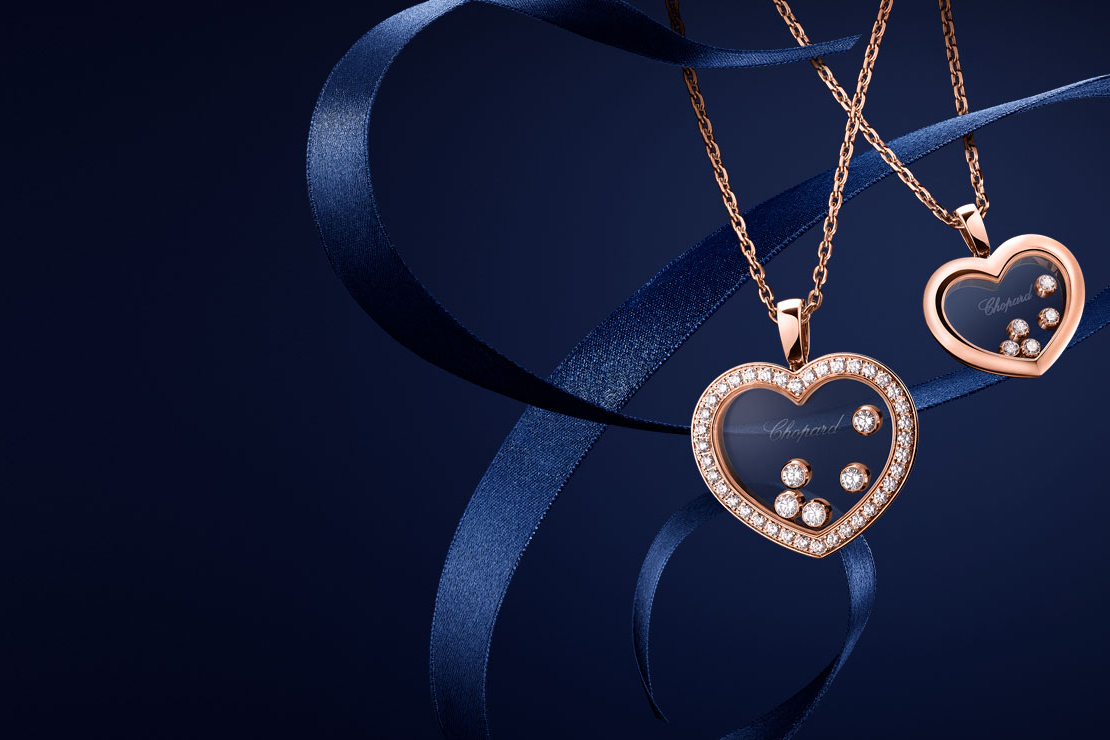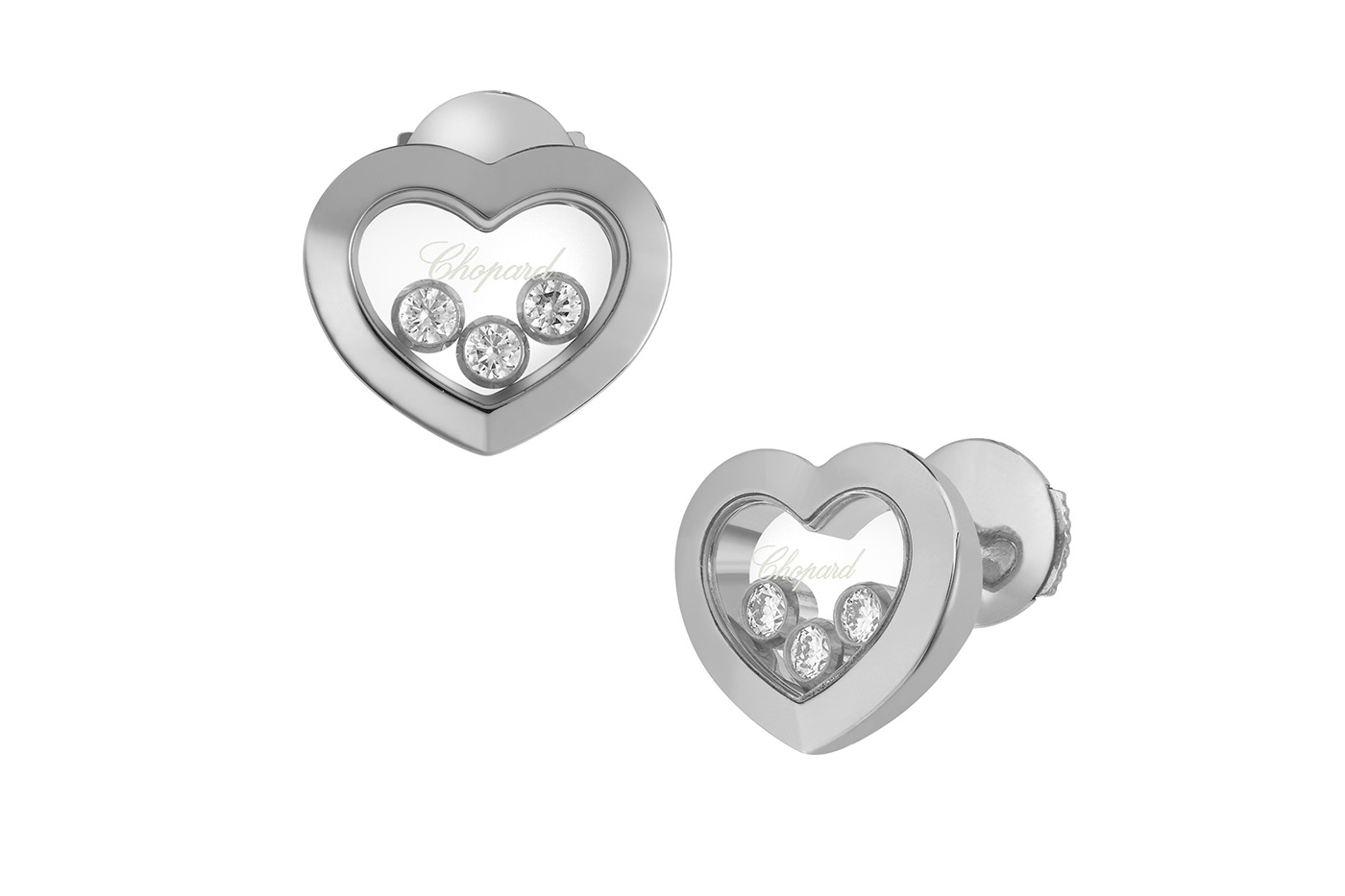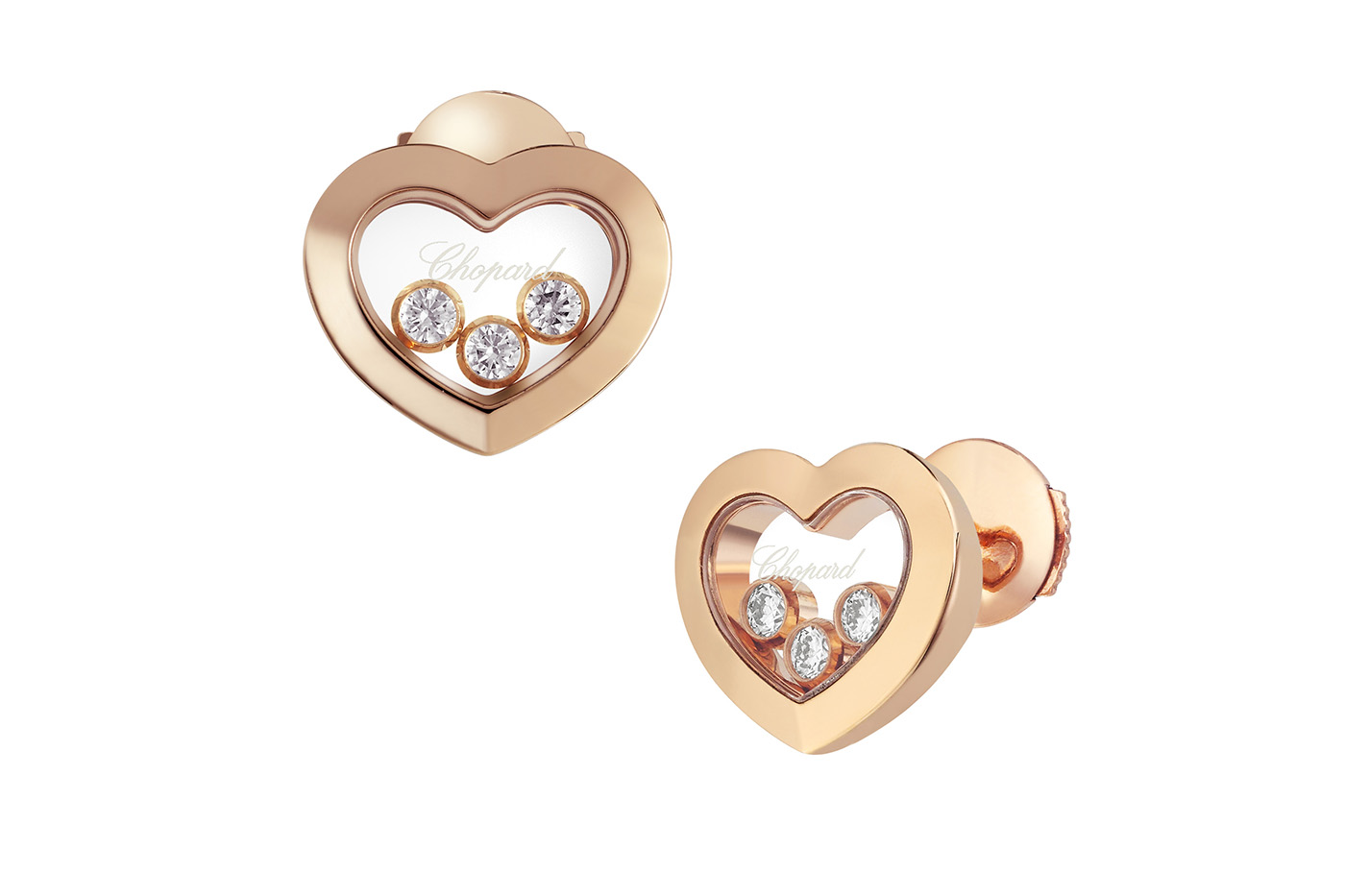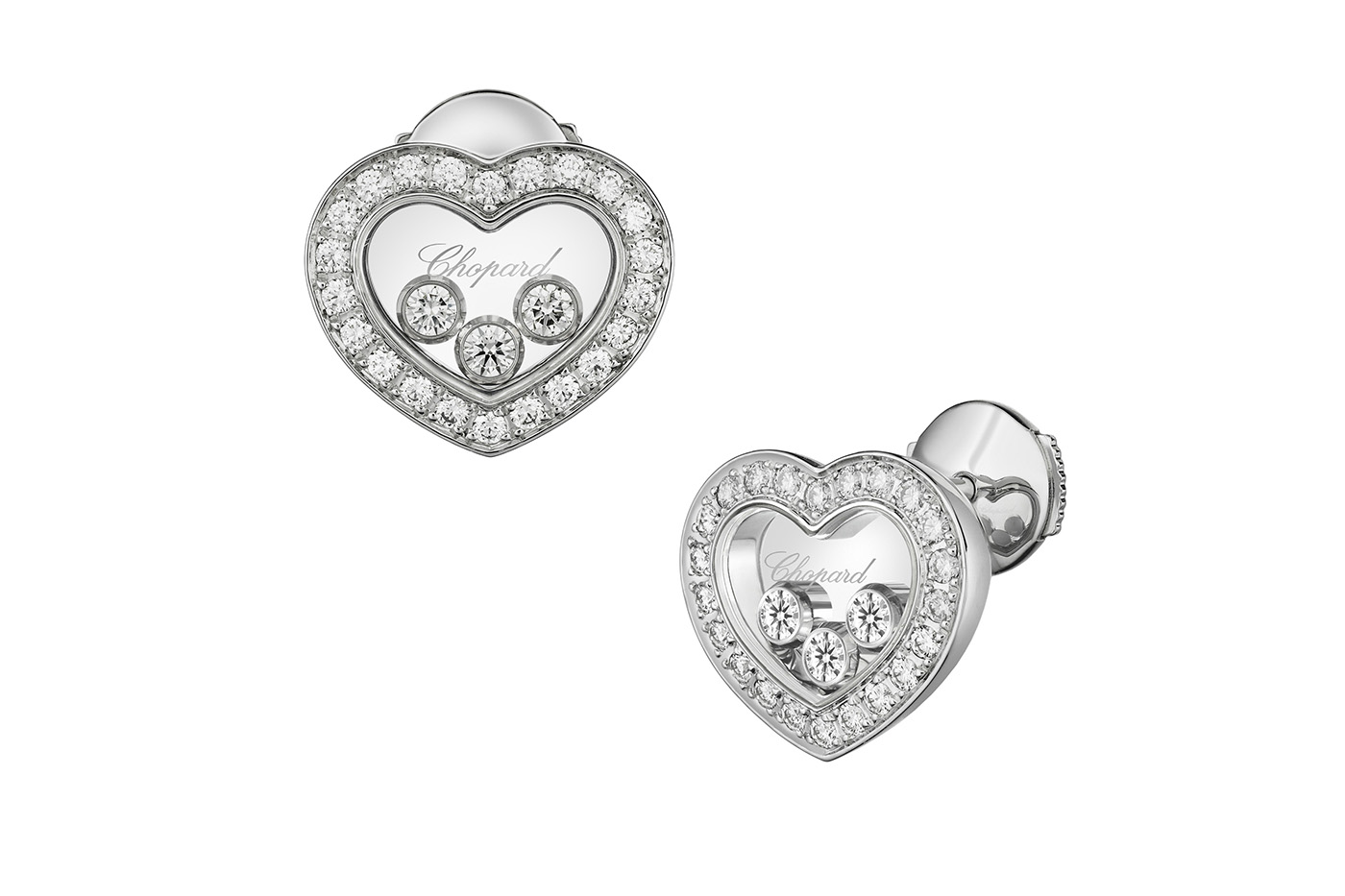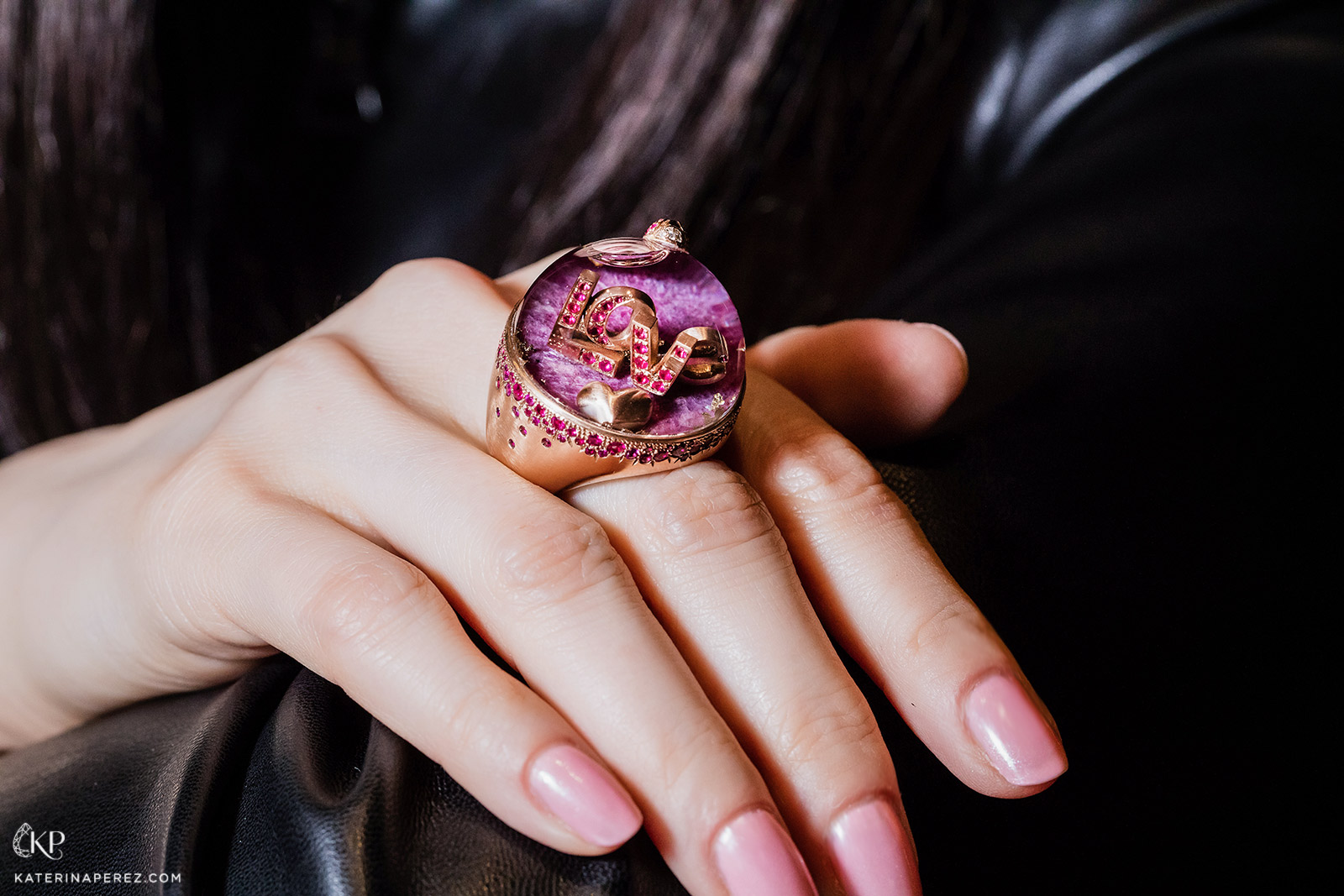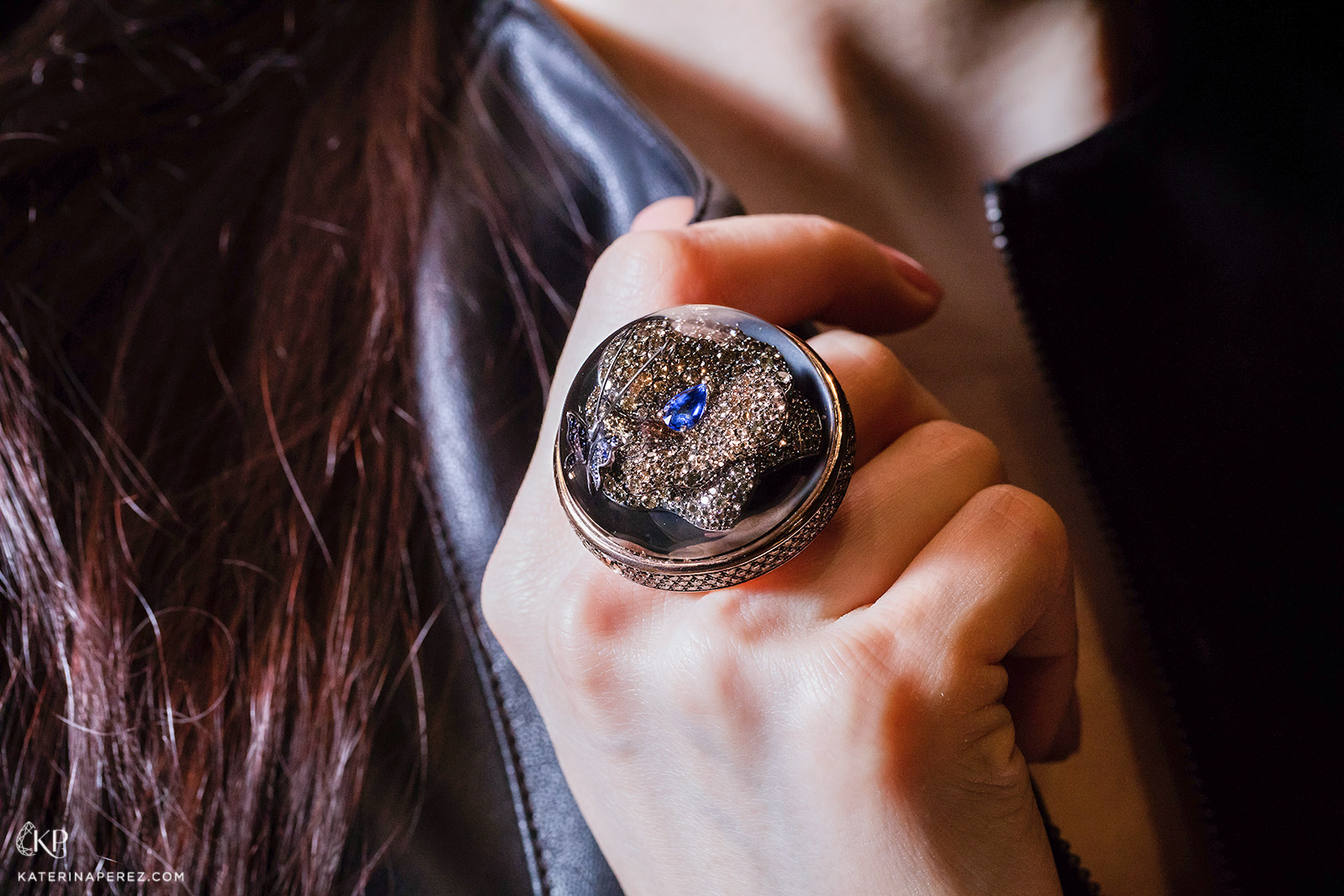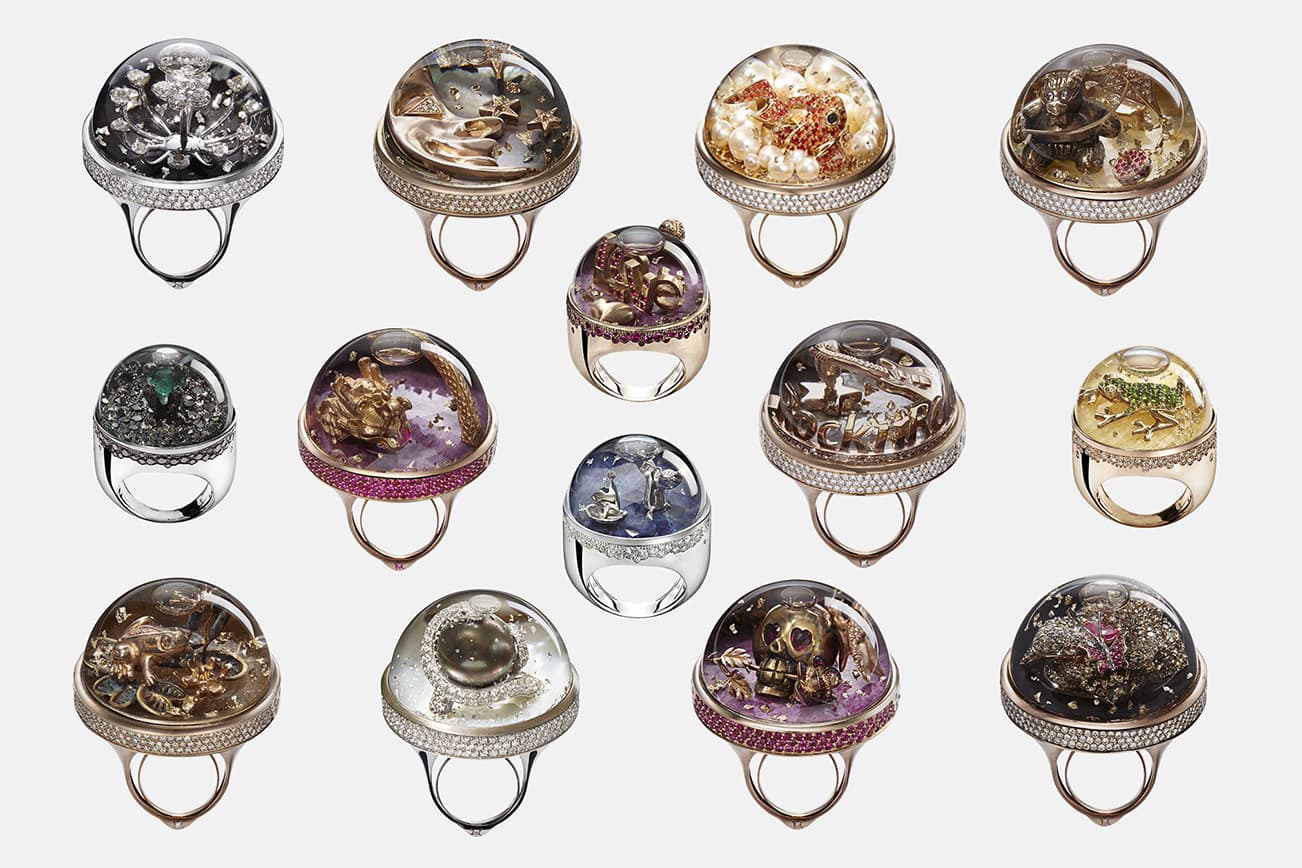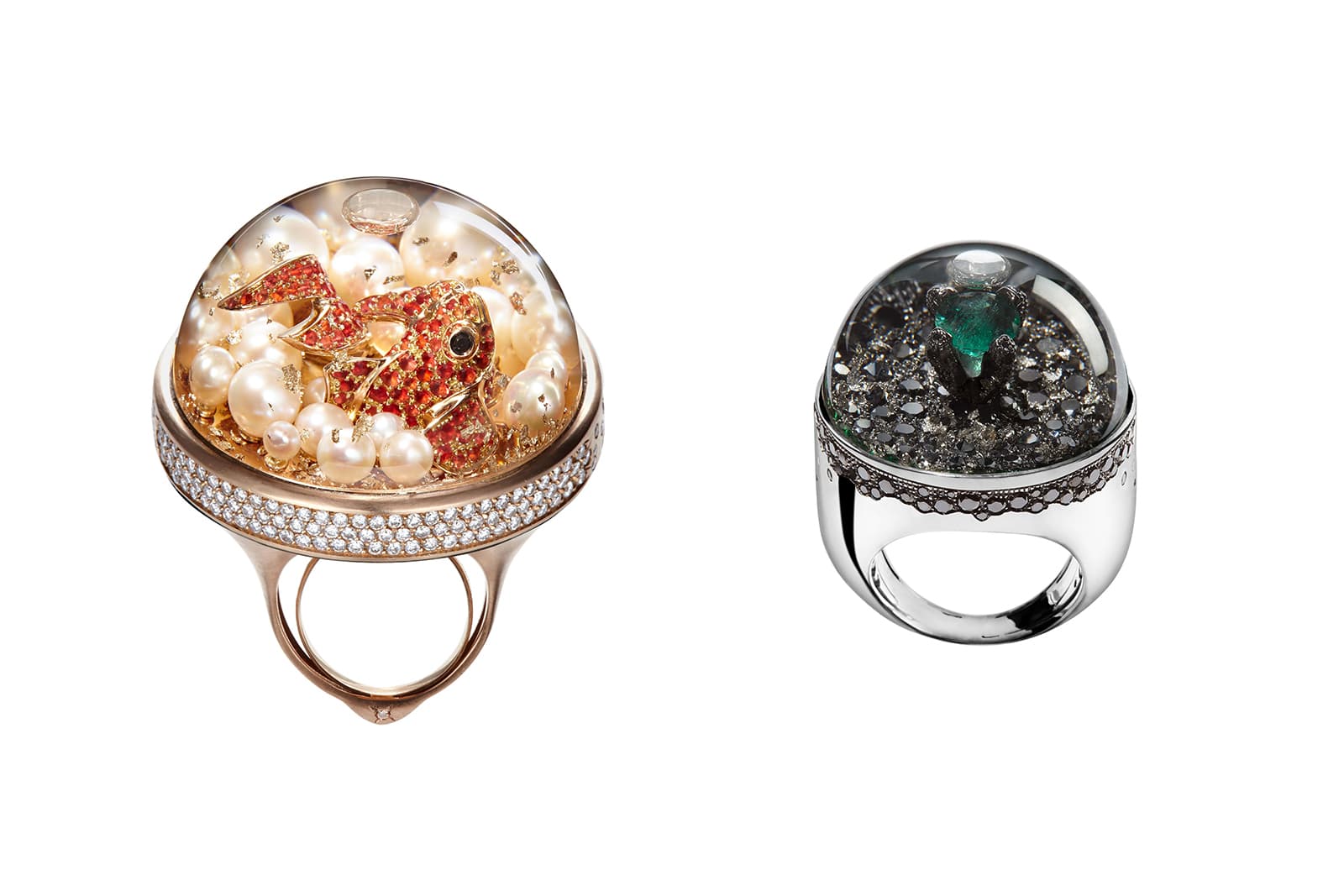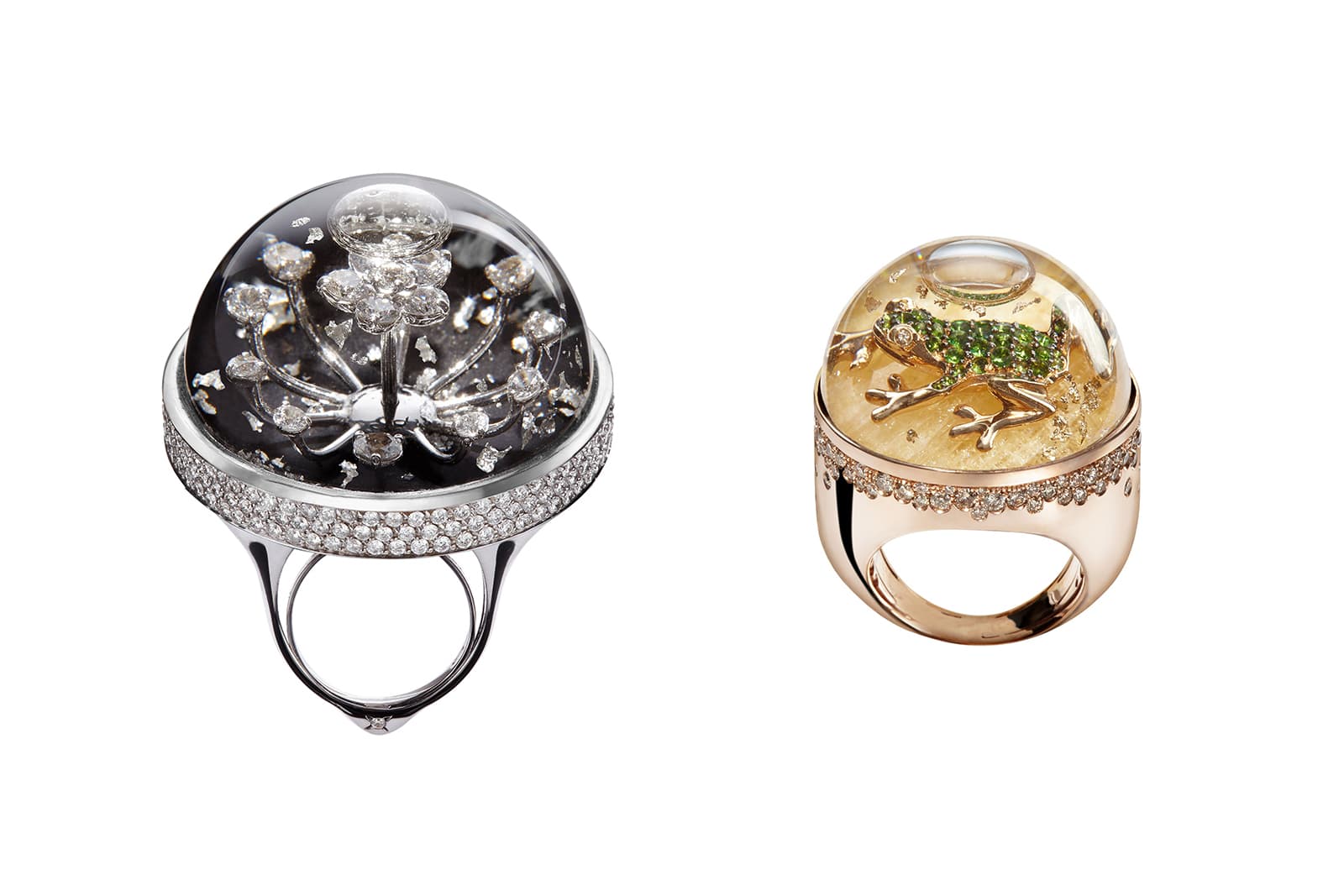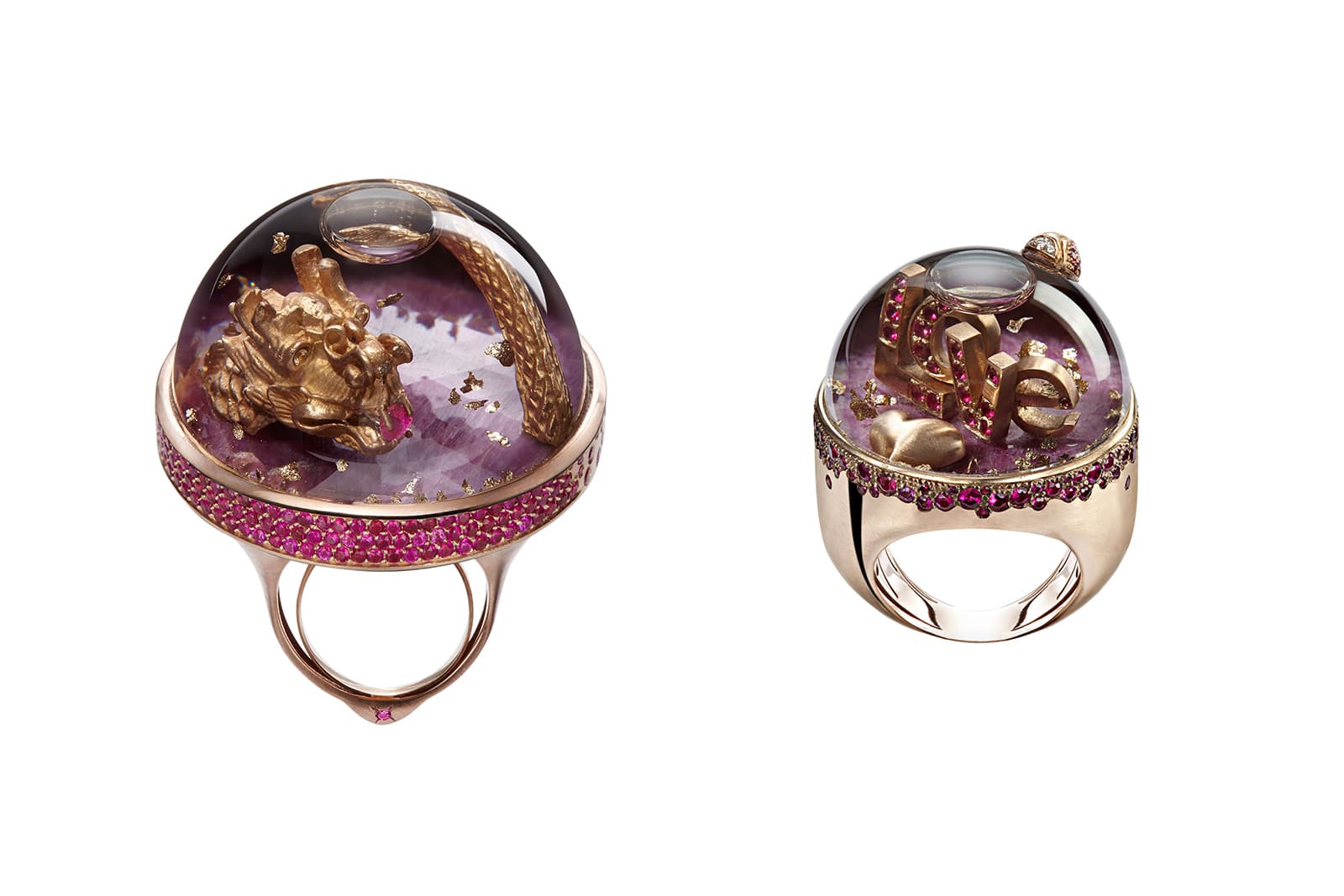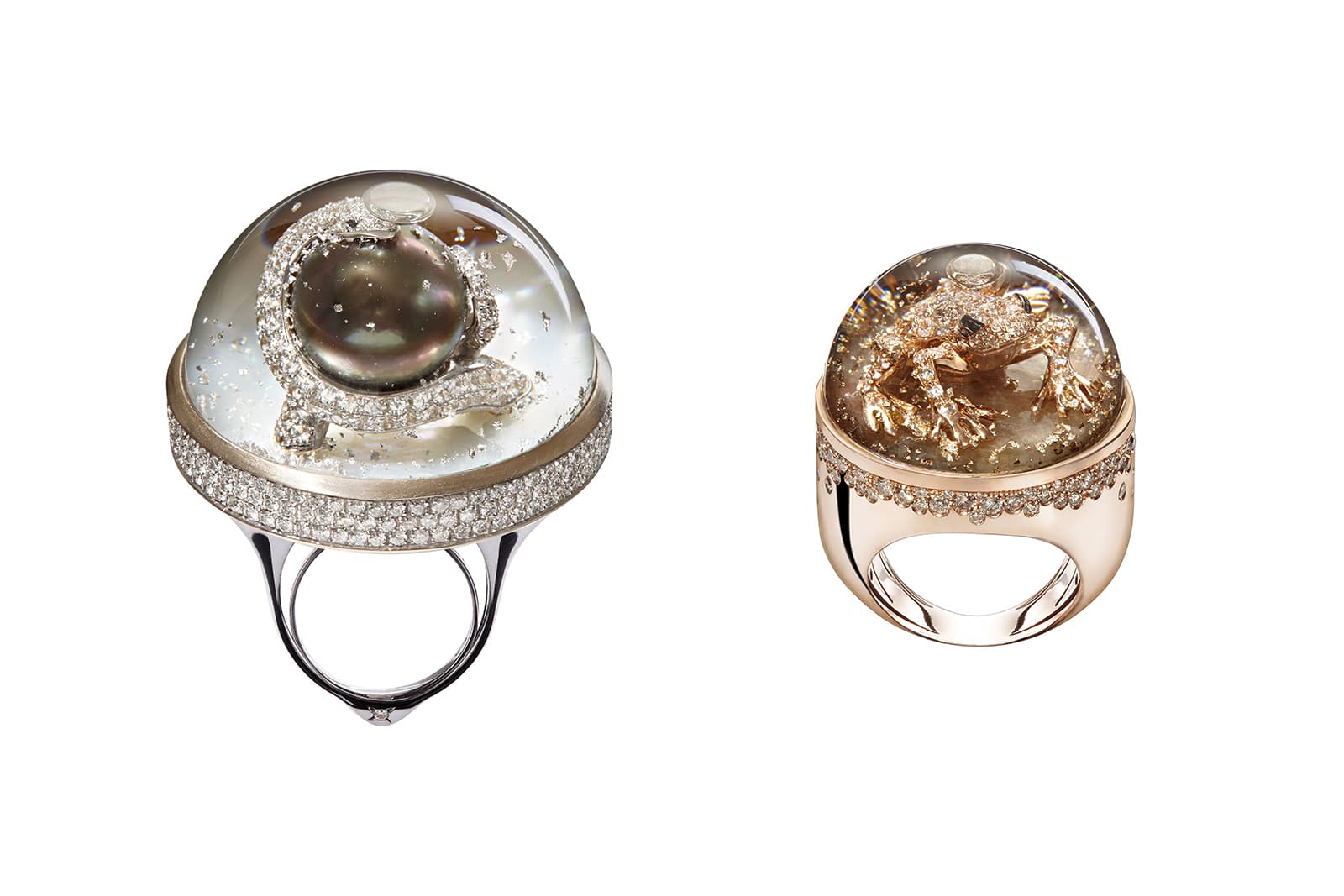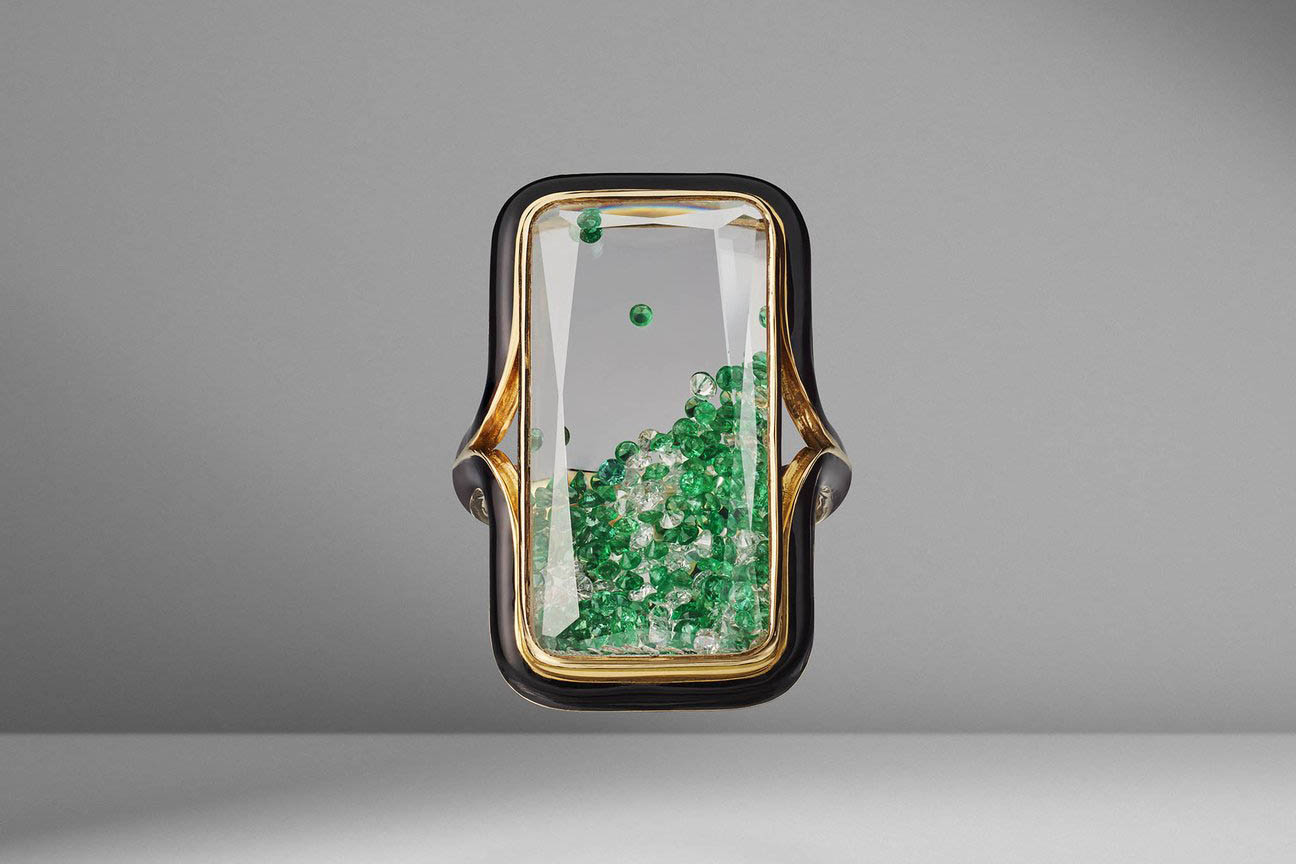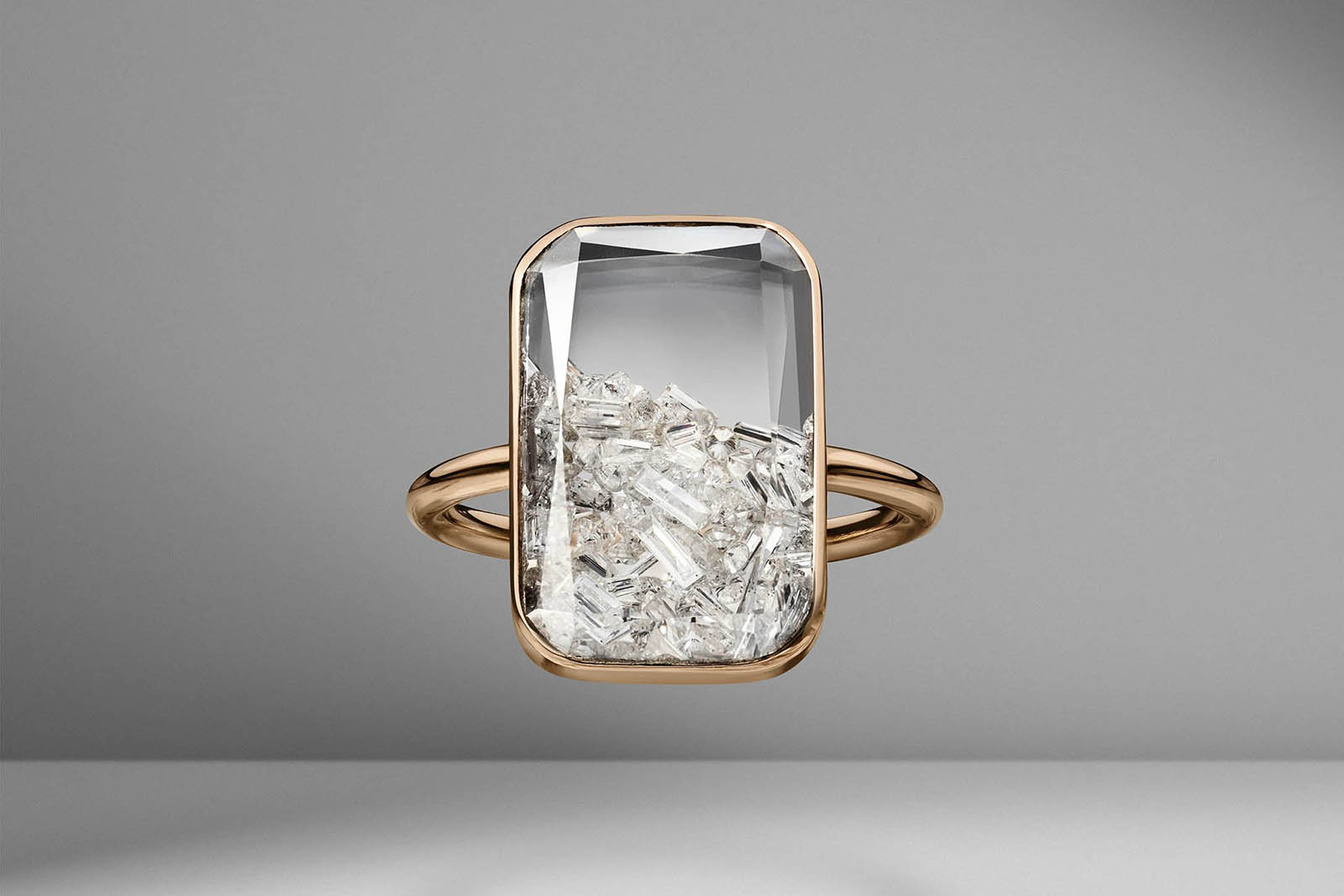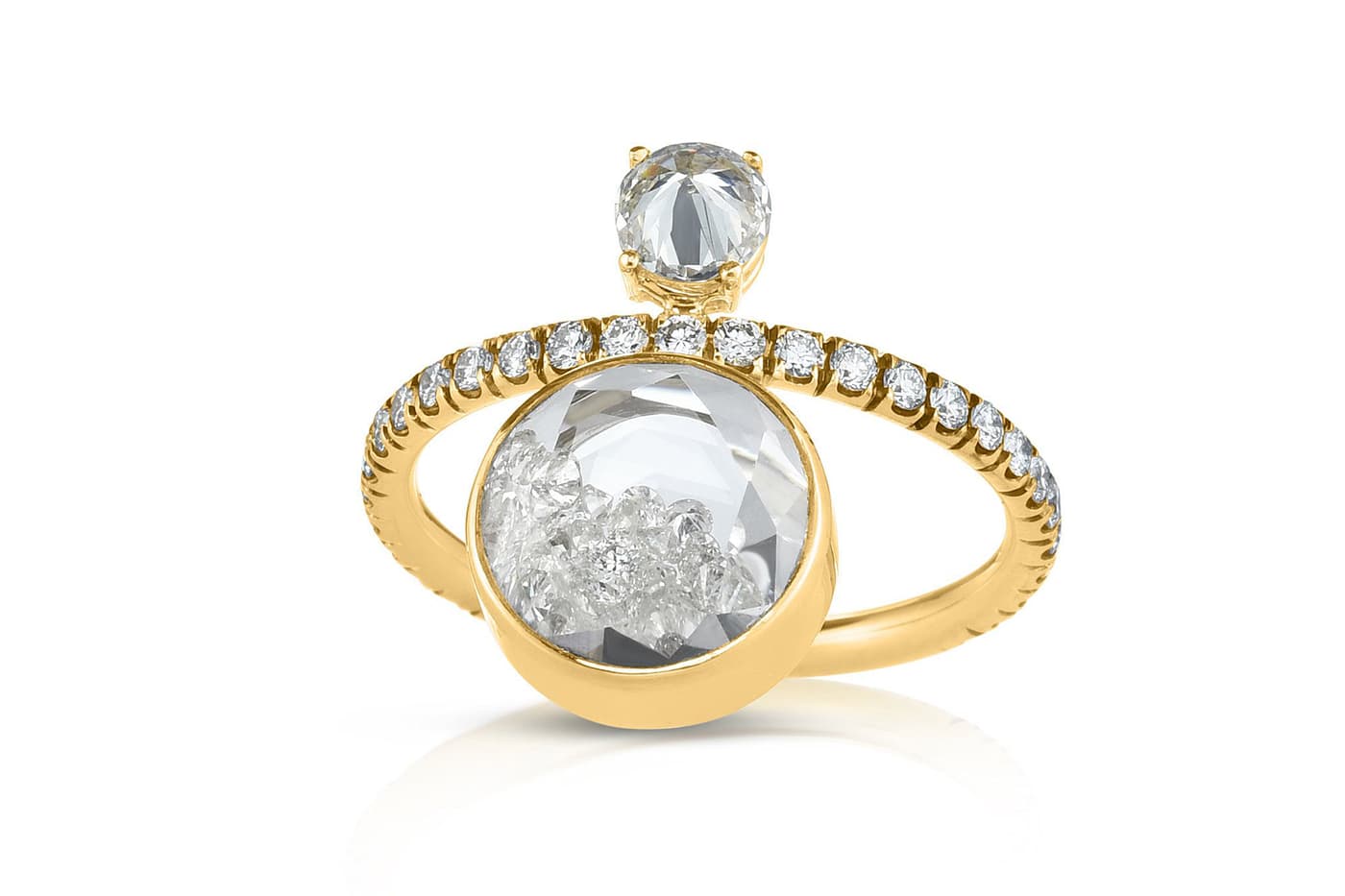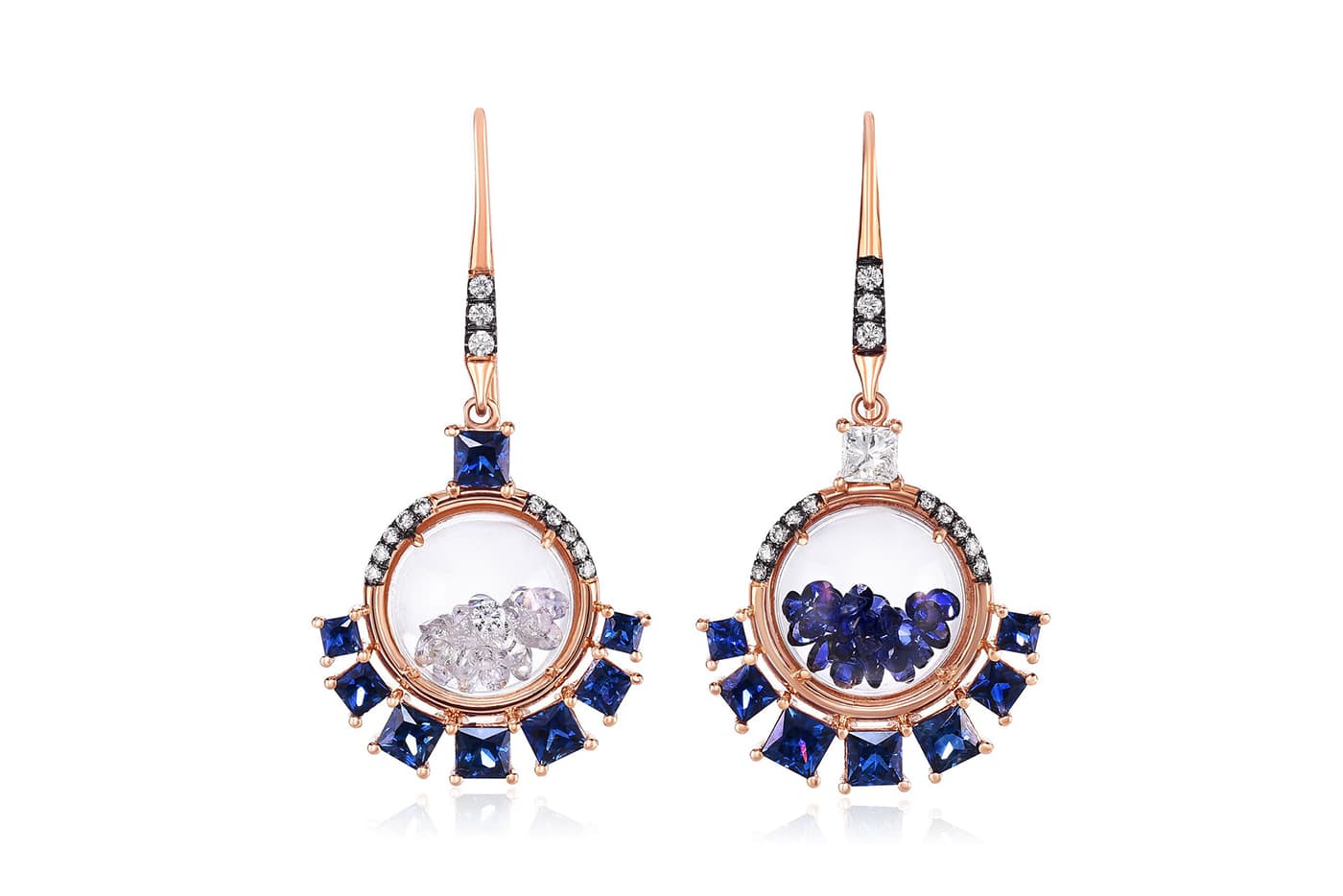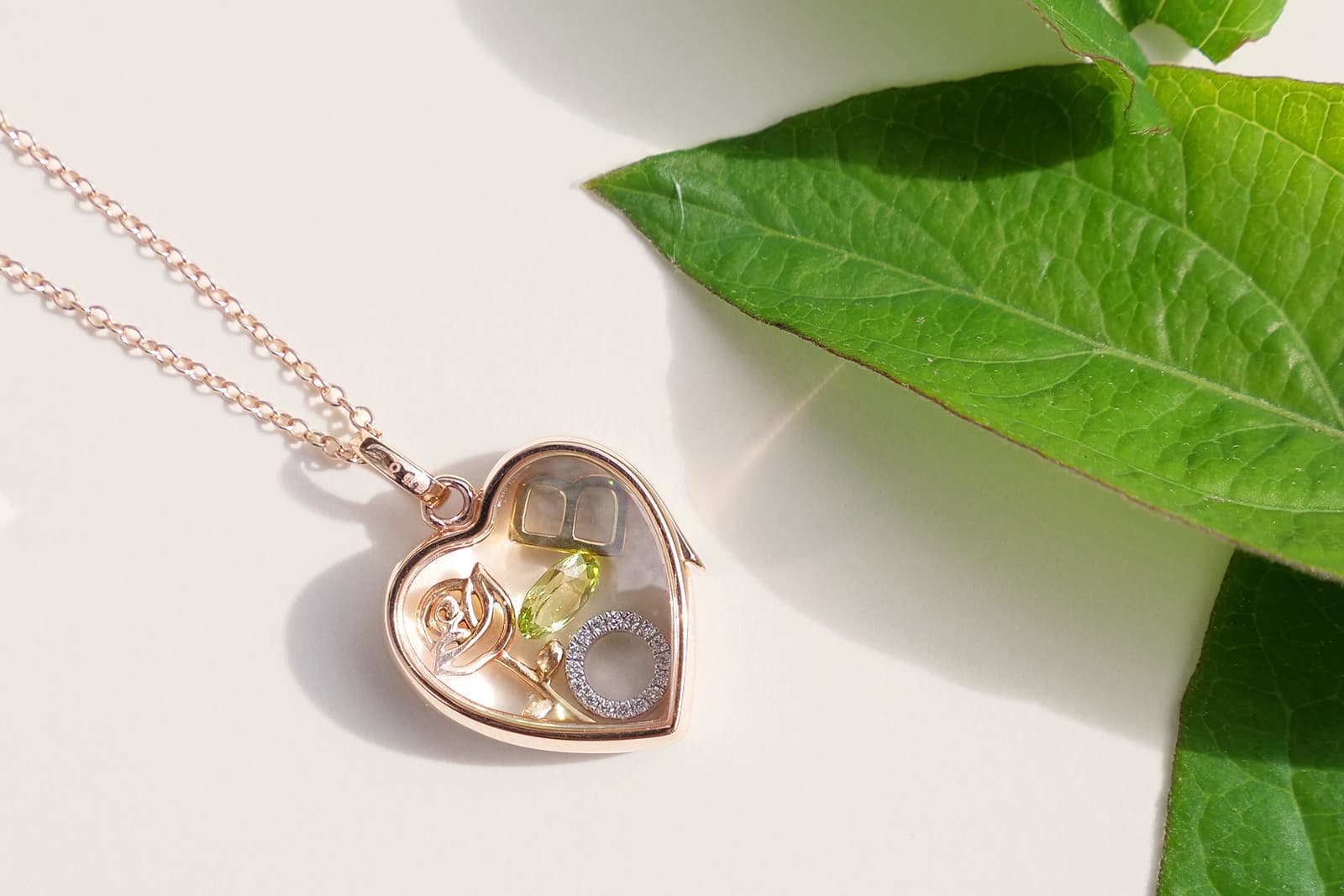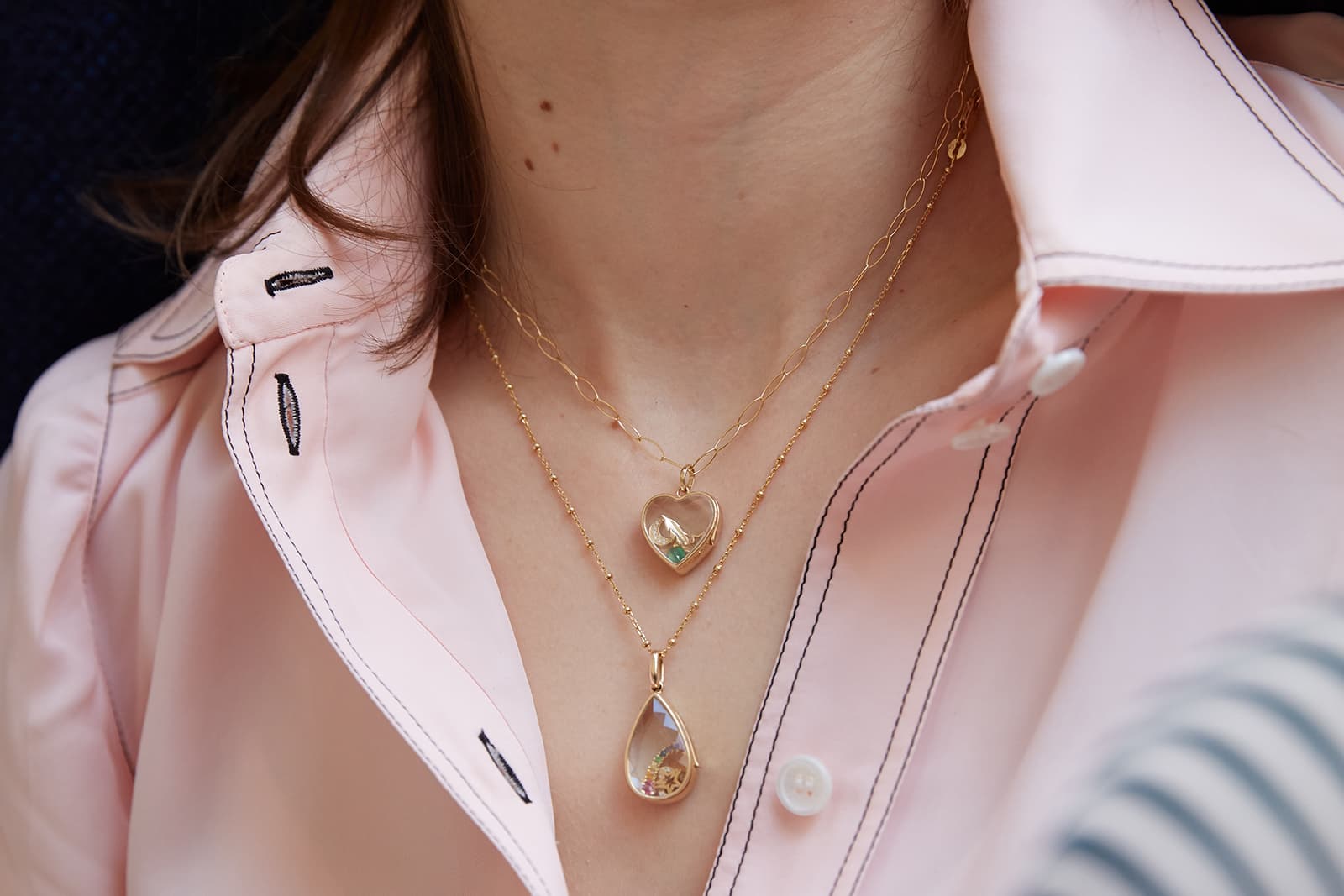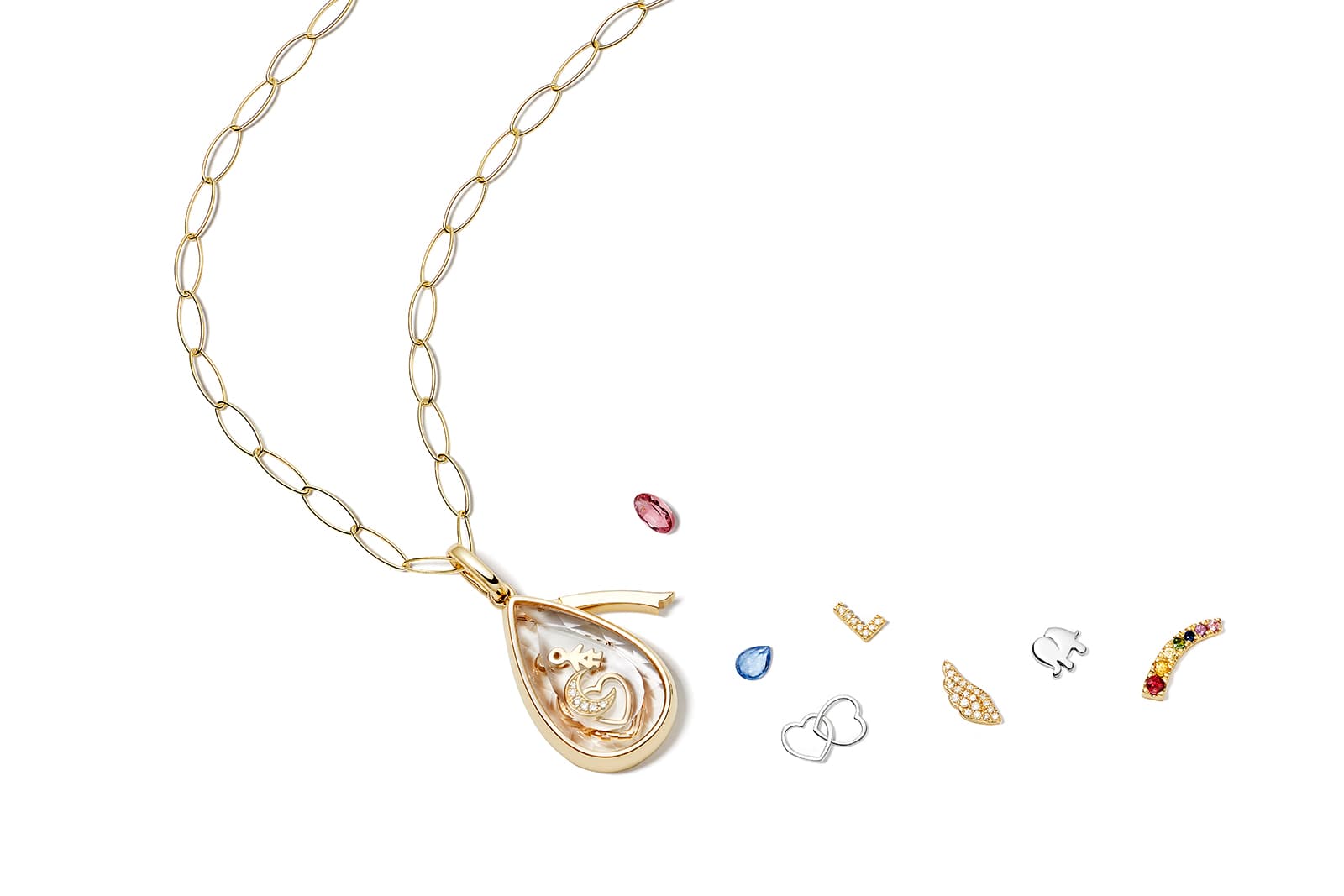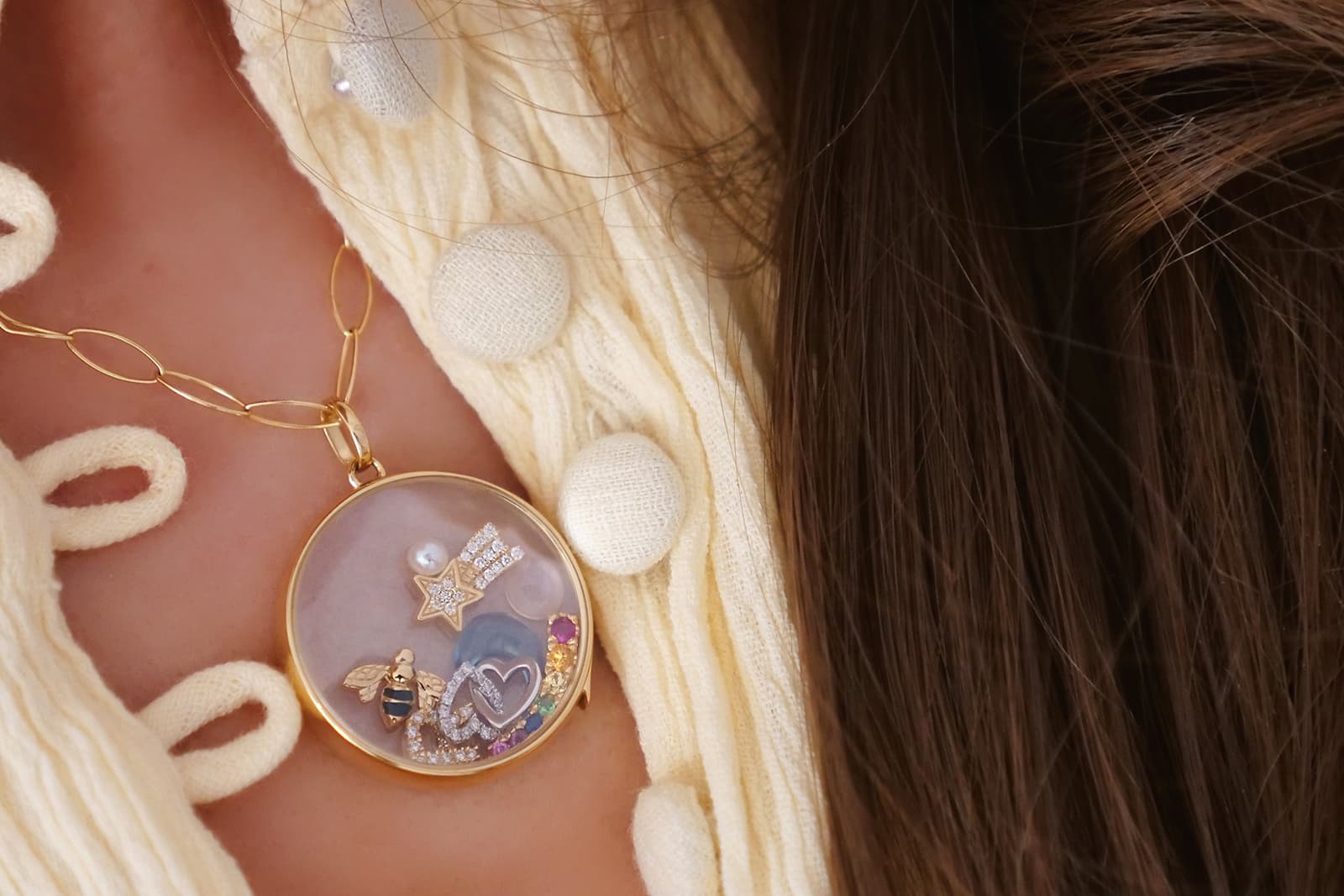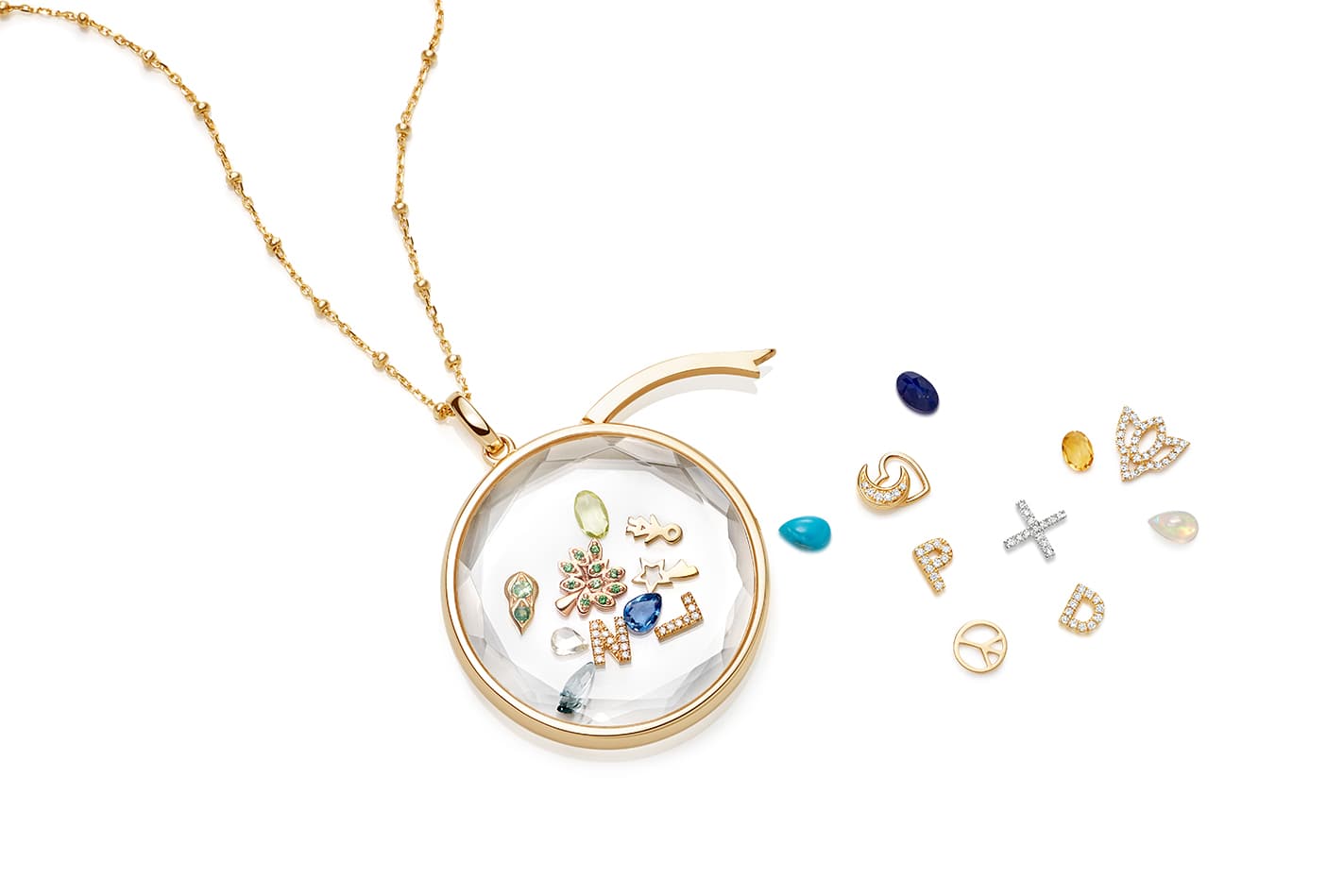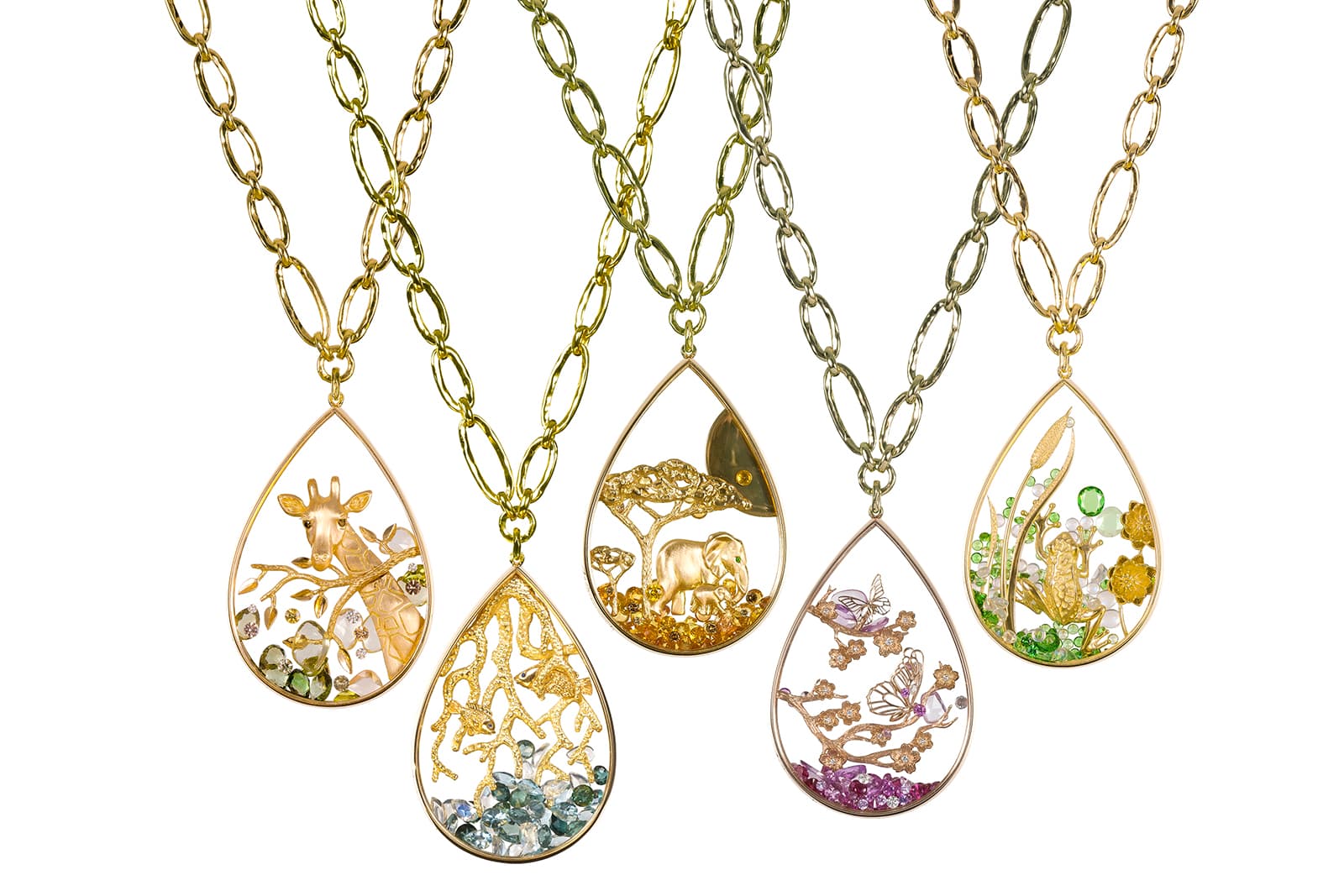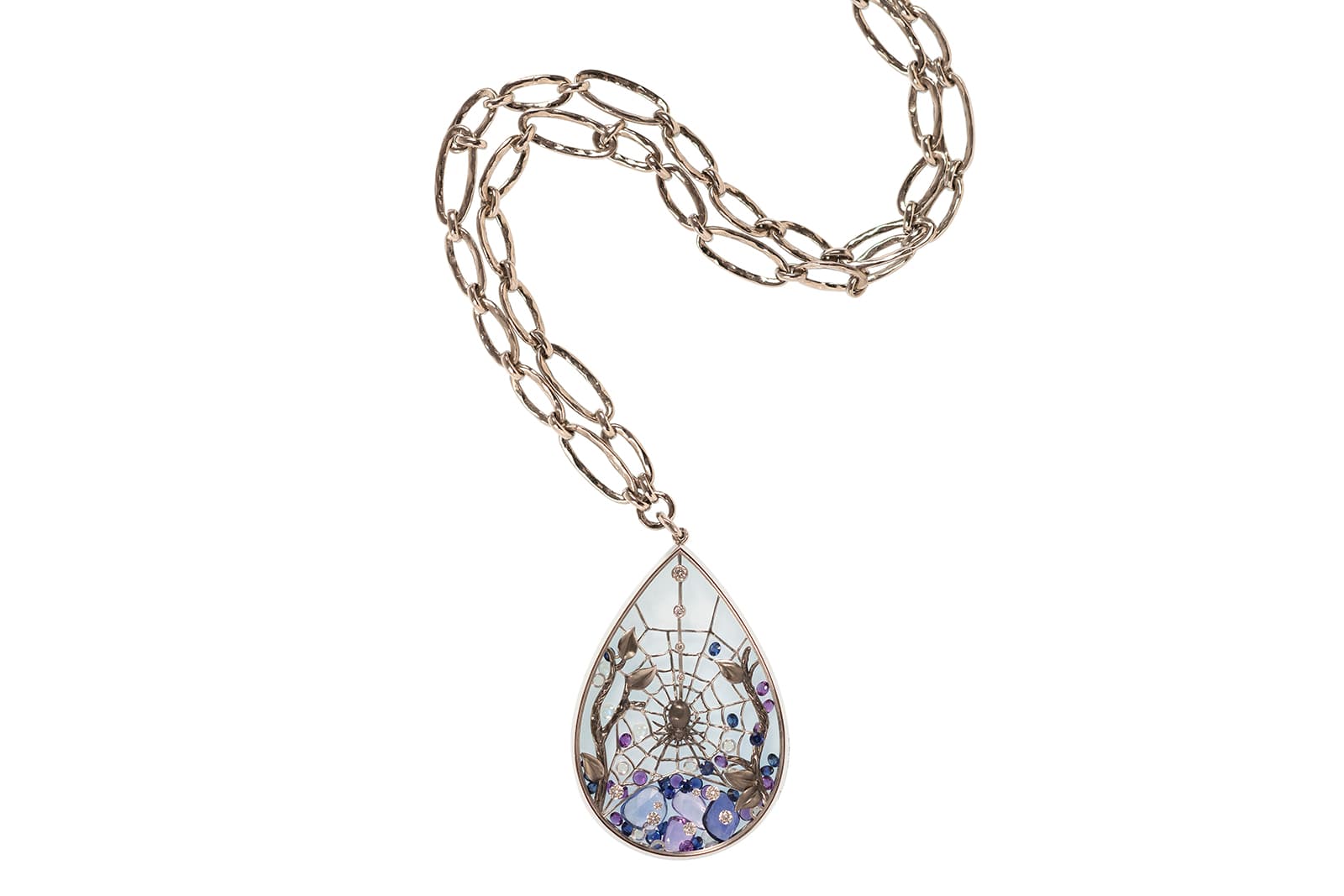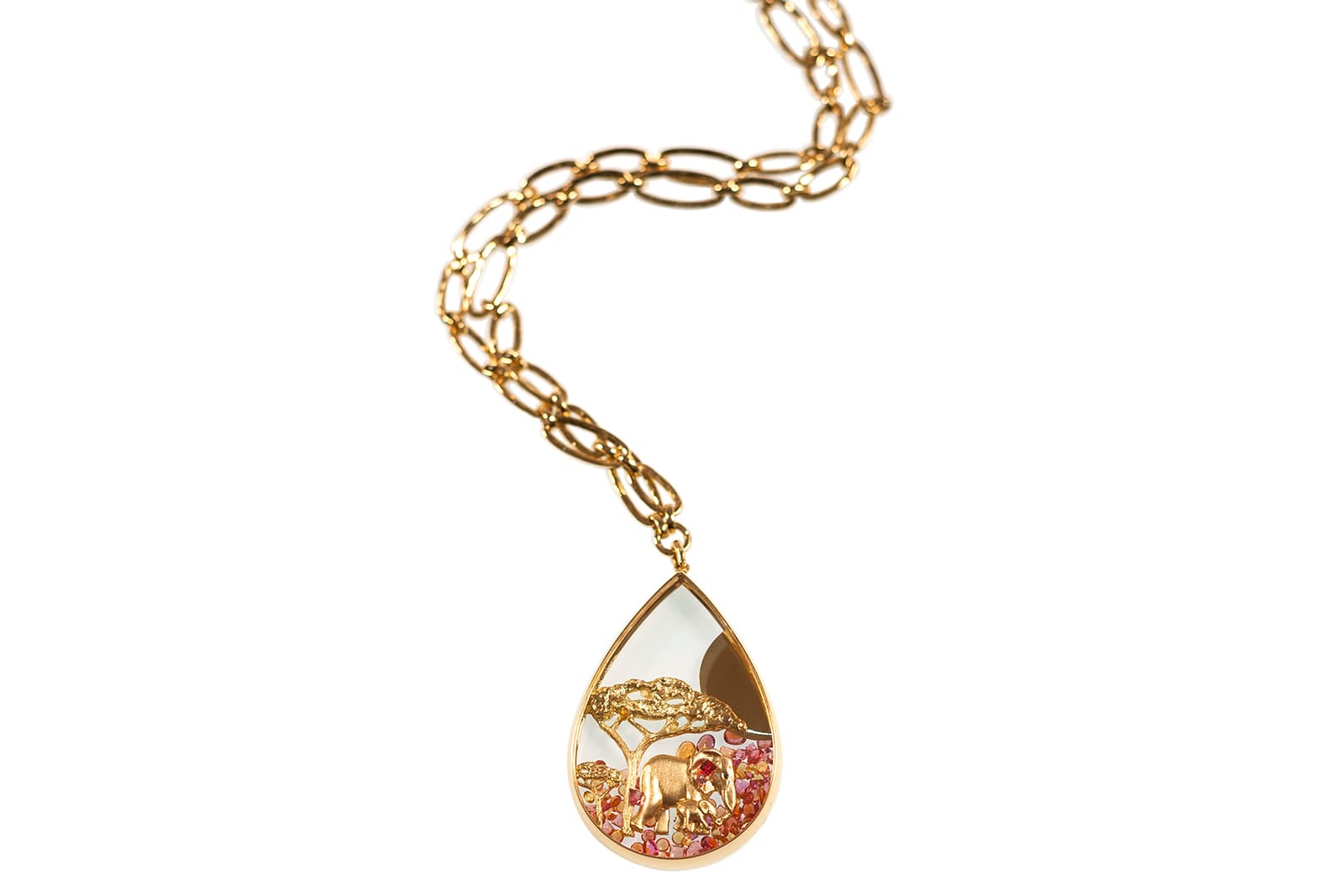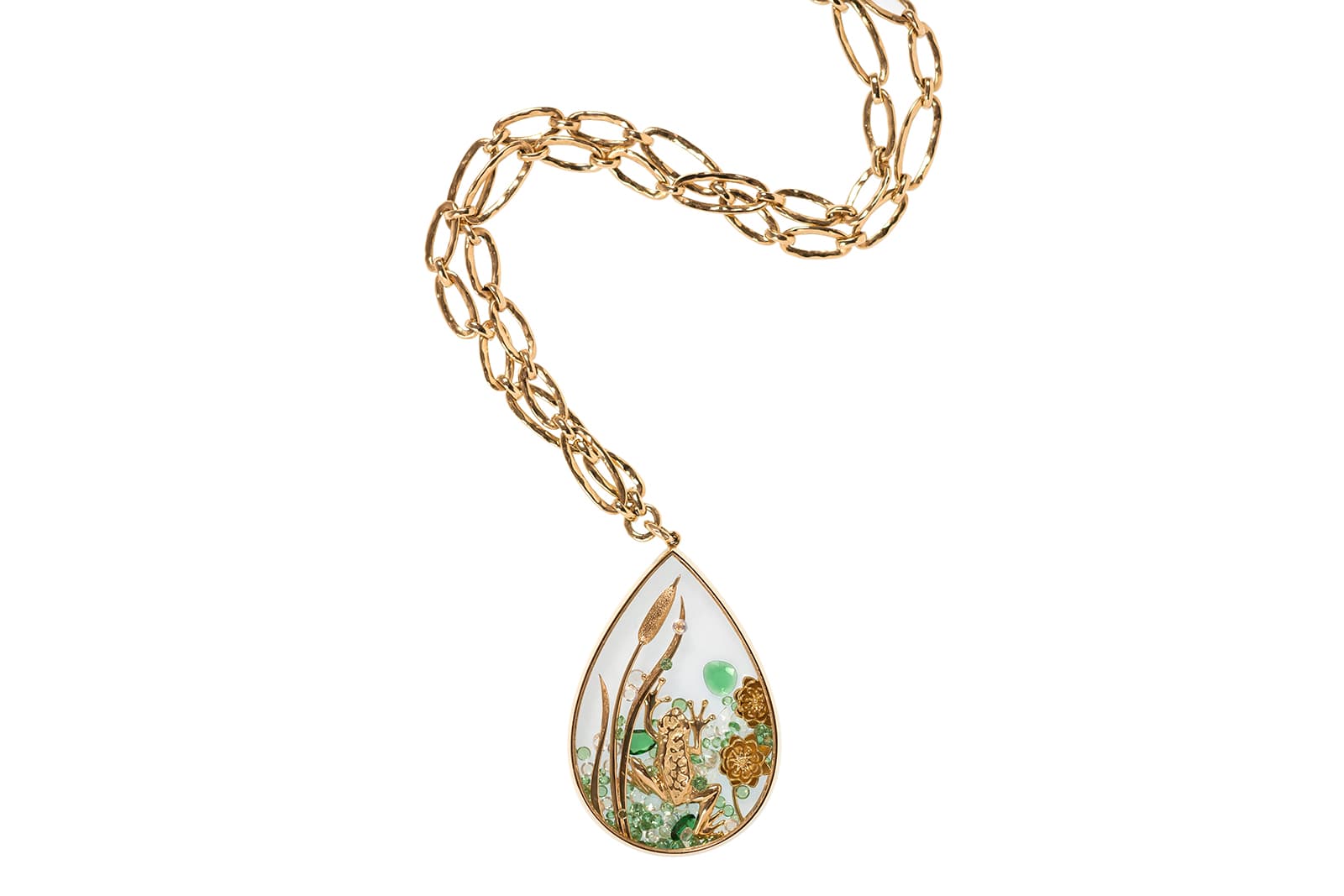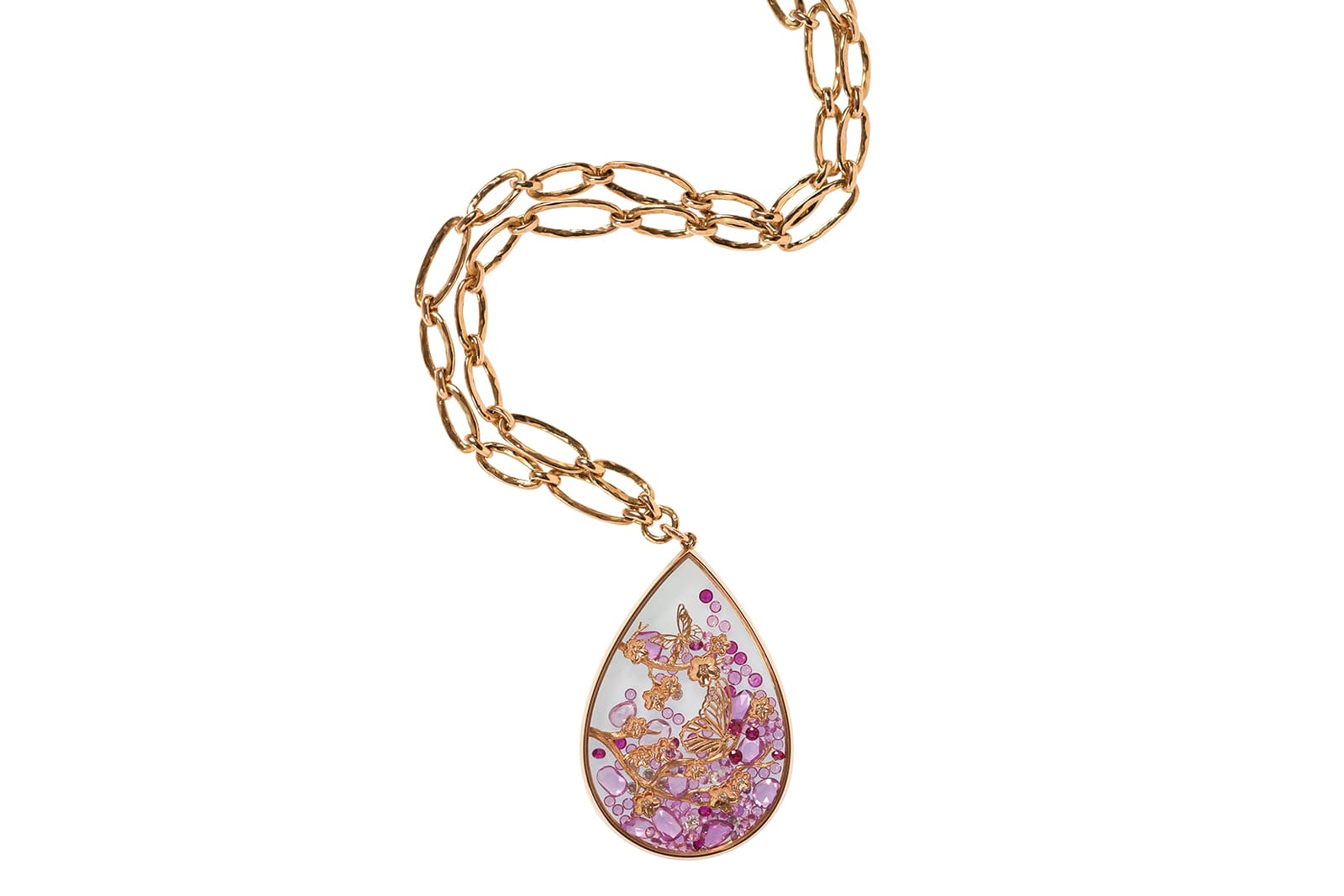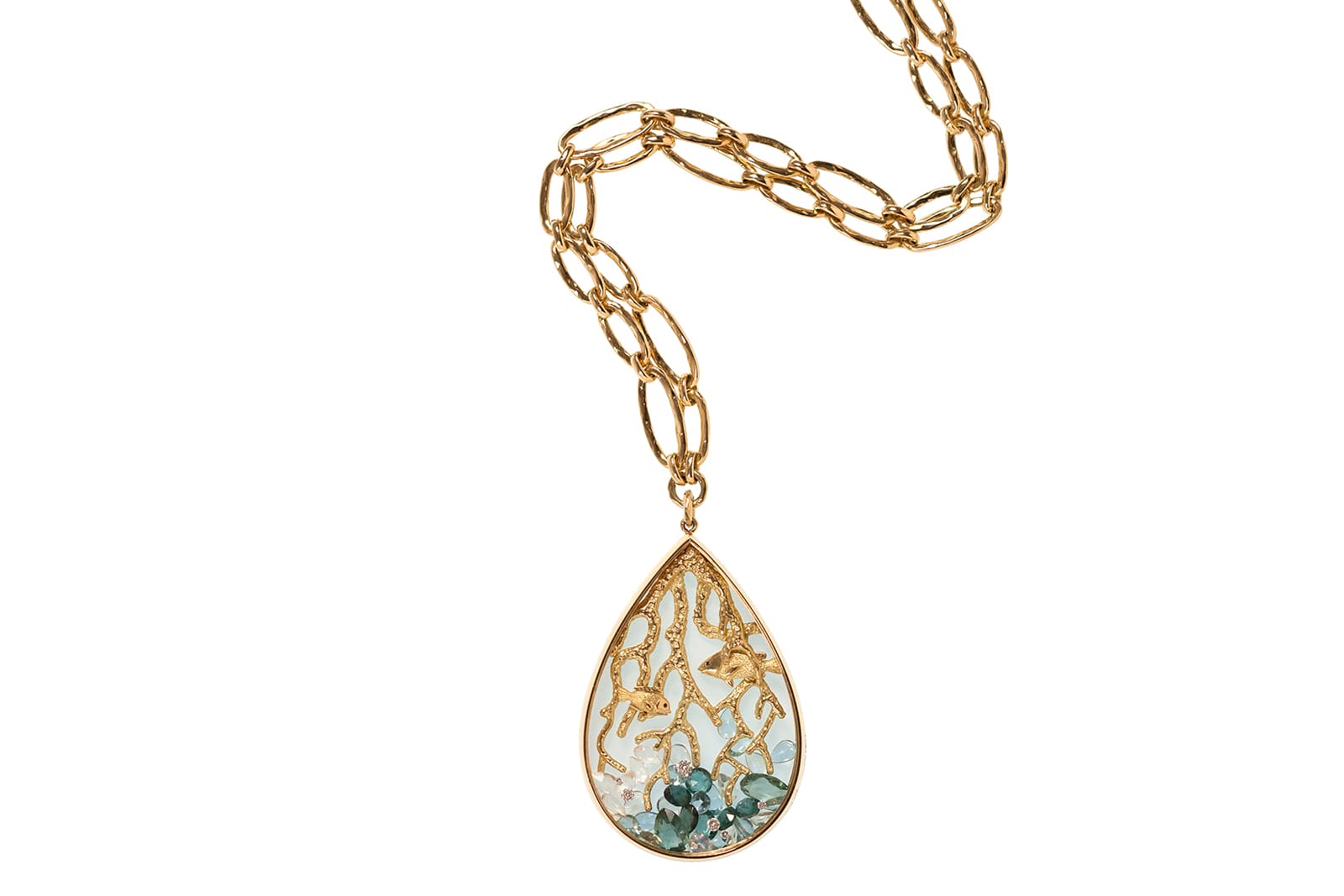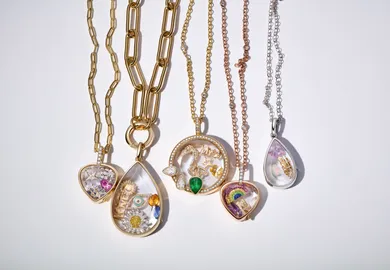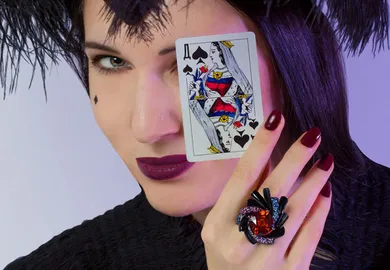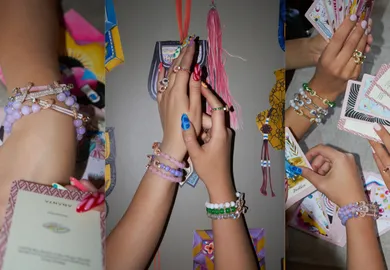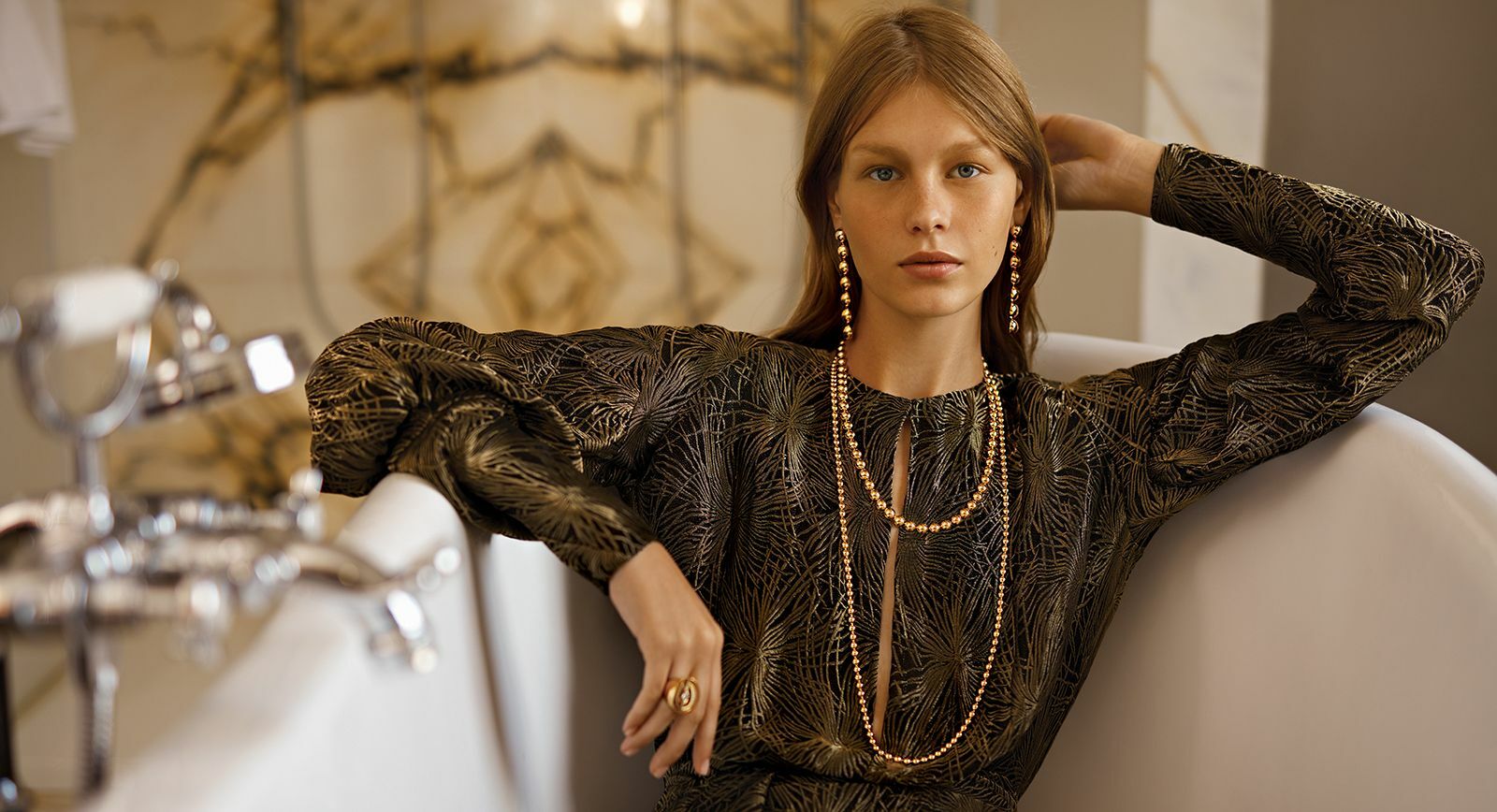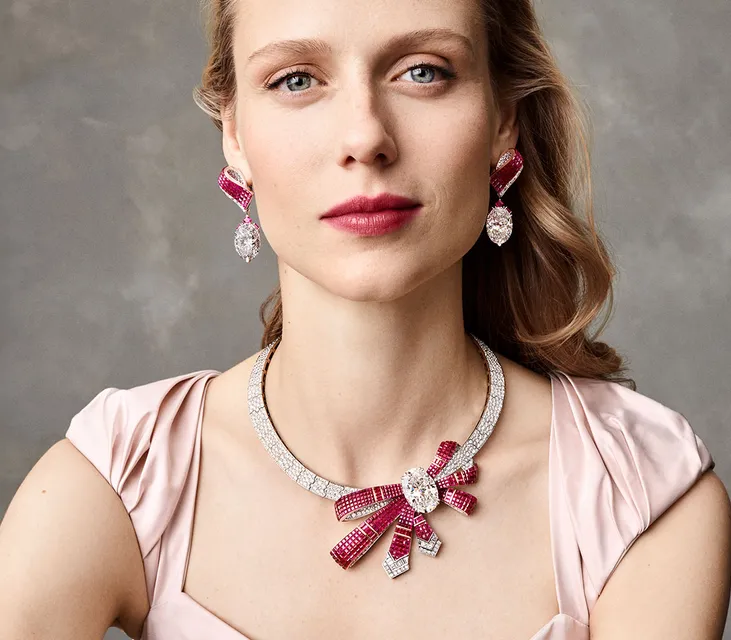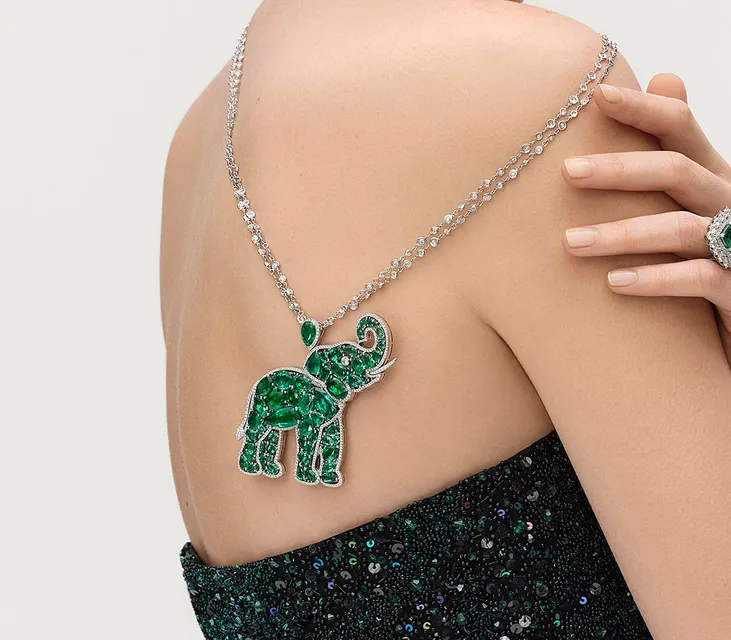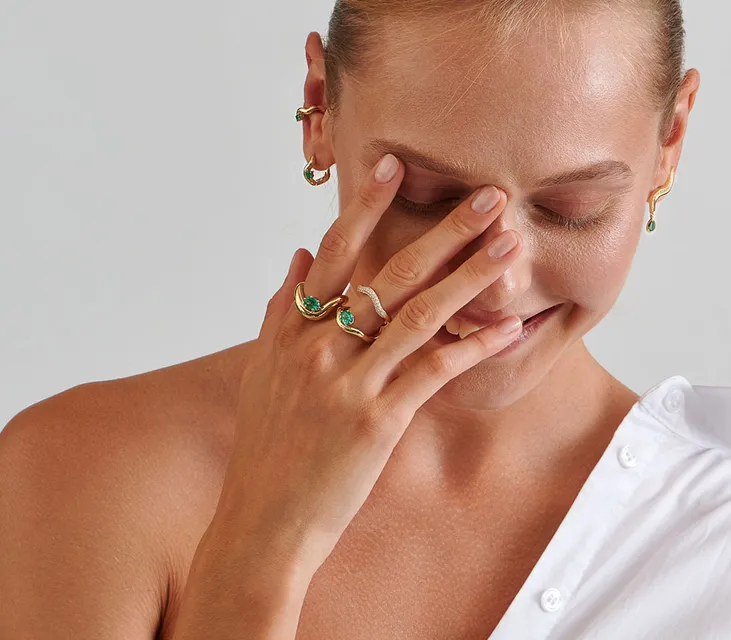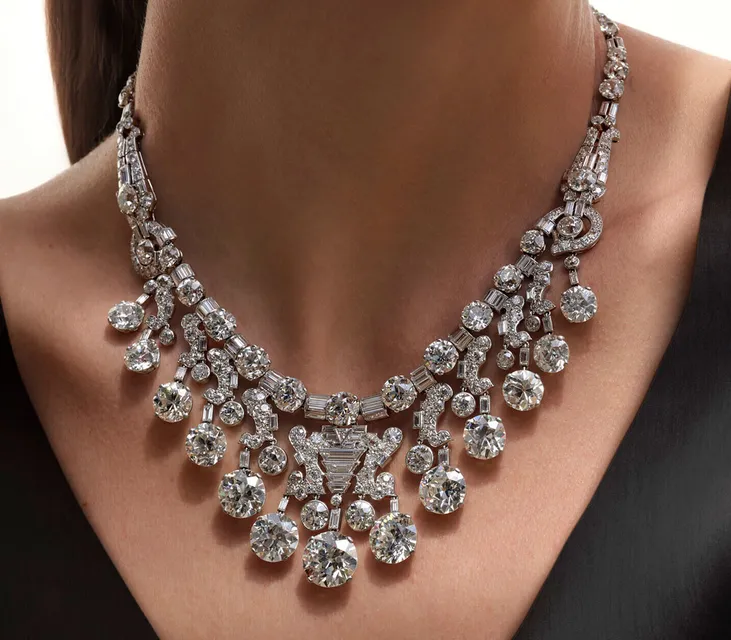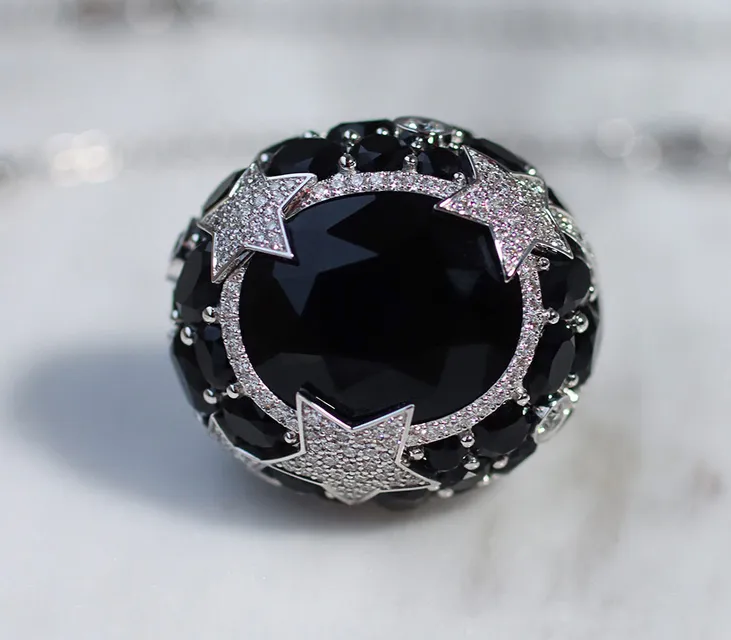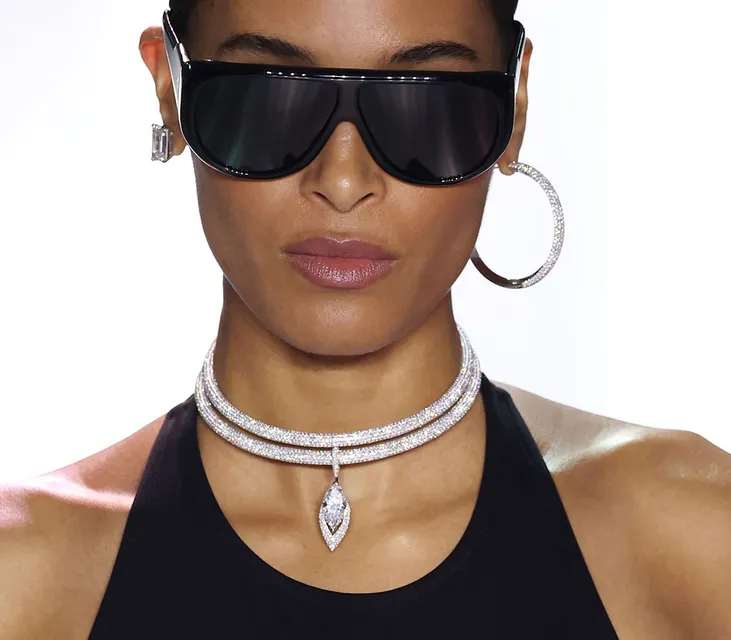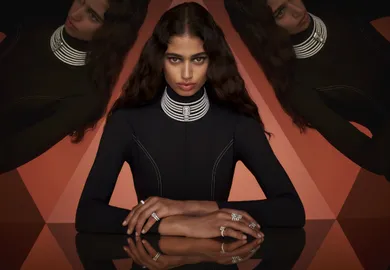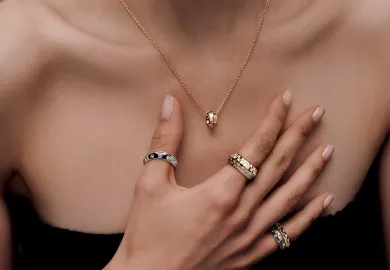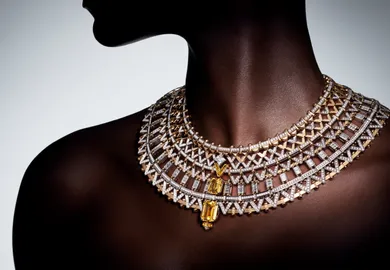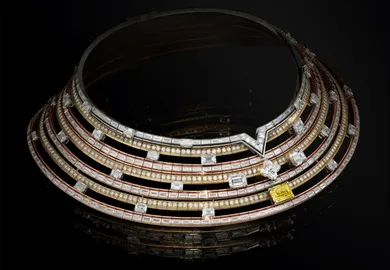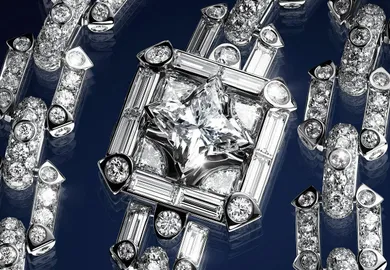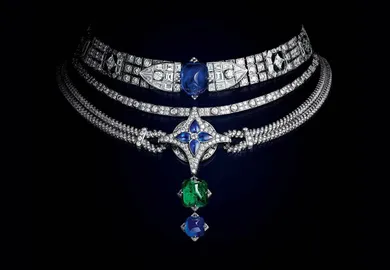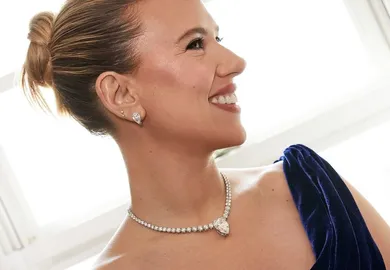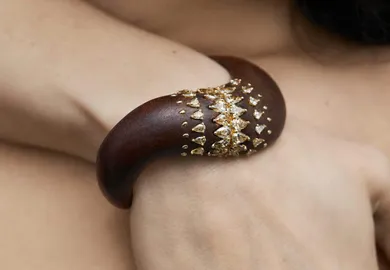
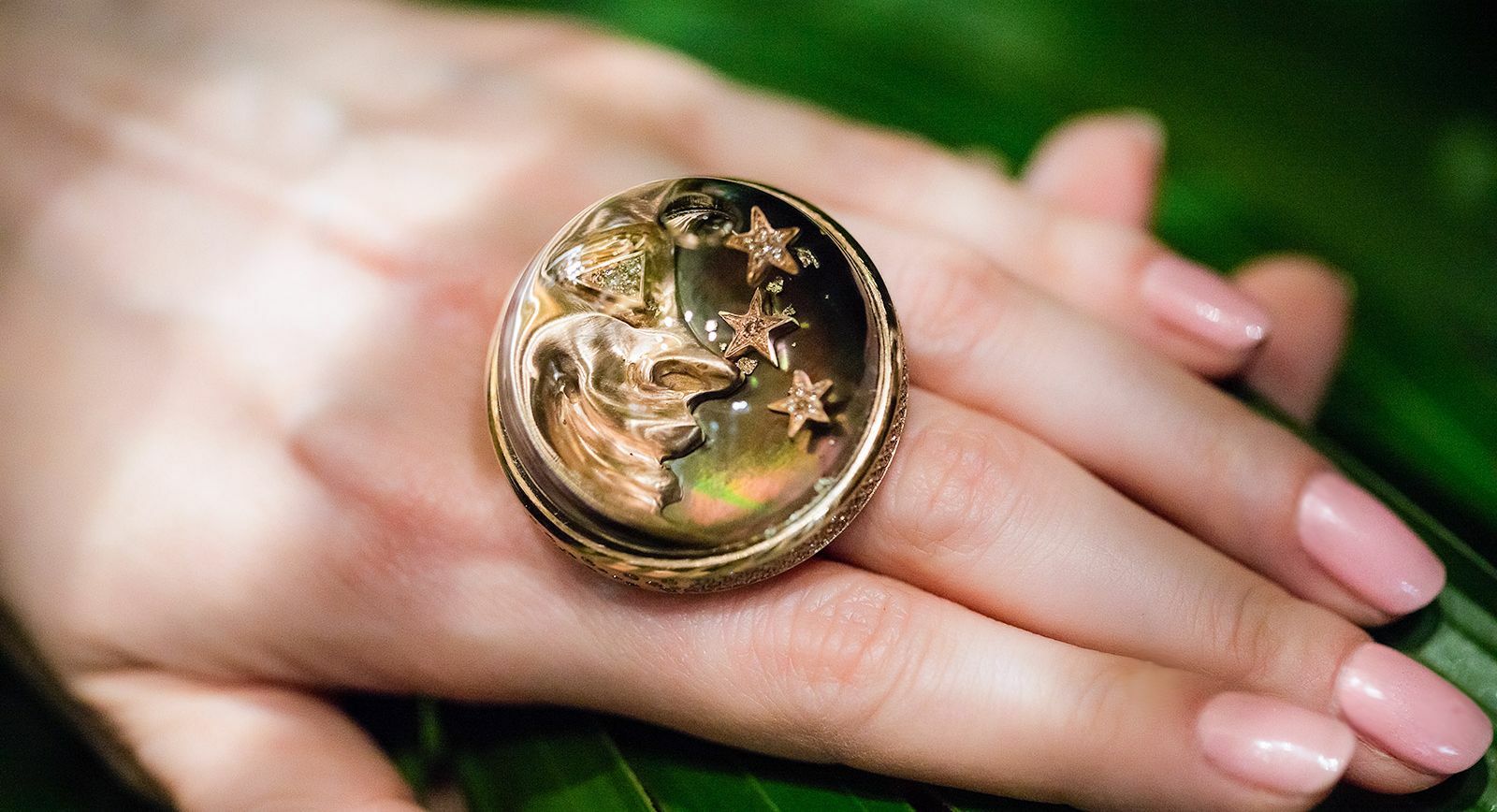
Sapphire glass: Jewellery surprises underneath sparkling domes
The finest layers of colourless sapphire are commonly used as the transparent lens through which we view the faces of timepieces. When polished to perfection, sapphire glass is almost invisible, providing a durable case for fine watches. However, this precious material isn’t exclusively reserved for horological masterpieces, but is also a unique feature of select fine jewellery collections. While in timepieces sapphire glass protects dials, designers use this feature to encapsulate an array of gemstones, sculptured gold figurines or some interchangeable personalised elements inside the transparent dome.
Chopard
One of the most famous designs which centres around sapphire glass is Chopard’s Happy Diamonds collection. Chopard’s designer Ronald Kurowski was inspired by the view of a waterfall in Germany’s Black Forest in 1976 – viewing the collision of water and sunlight, whereupon thousands of drops of water reflected the light of day and sparkled. This led to the first design: Happy Diamonds de Chopard men’s watch, with diamonds in a bezel setting freely shifting between two layers of sapphire glass without interfering with the movement of the watch hands. Chopard’s Creative Director and Co-President Caroline Sheufele is reported to have said that “the diamonds are happier when they are free” upon first seeing the piece. Since the launch of the Happy Diamonds by Chopard jewellery line in 1985, the Happy Diamonds collection continues to be popular to this day.
Dreamboule
Dreamboule are a Milanese brand, and as such their craftsmanship and ingenuity are the foundations of unique designs. Inspired by snow globes, Dreamboule’s instantly recognisable rings are created by mounting a 3 millimetre thick sapphire crystal dome atop of a 25 or 30 millimetre diameter disc of jade, ornate stone or mother of pearl, decorated with sapphires, rubies, emeralds or diamonds on the ring’s face. Each ring is filled with special fluid invented by the brand’s founder Benjamin Crocco, which he refers to as his “dream solution” – it contains flakes of 24 carat gold which float around precious sculptures or solitaire gemstones carefully placed under the sapphire dome.
Moritz Glik
Moritz Glik arguably creates some of the best-known sapphire glass centric jewellery, with his signature design based on the kaleidoscope. Between two panes of white sapphire, he captures a variety of precious gemstones of all types, cuts and colours which tumble and spill around within the framework of this casing. The breadth of Glik’s earring, pendant, ring and bracelet styles is astonishing, but all of his jewels are based around this one fundamental concept – no matter whether surrounded by a black enamel frame, pavé diamonds or attached to a leather wrist wrap.
Loquet London
Loquet London also employs sapphire glass panes, however, these are designed to emulate traditional locket pendants, and open so that you can personalise your charms with birthstones, gold initials, a June pearl or motifs like gemstone rainbows or diamond-studded shooting stars. This way, you can create your own bespoke combination of treasures which lie through the prism of the glass. Loquet also has ring, bracelet and earring collections available that feature the same playful charms and motifs that can be included in the pendant lockets.
Alexandra Abramczyk
Another set of sapphire glass pendants comes courtesy of Alexandra Abramczyk’s Secret Glass collection. The designer chose to illustrate each jewel with different gems that correspond to alternate natural scenes – such as warm coloured stones for the African elephant. “I chose to focus on nature because I am passionate about flowers, plants, insects and animals; I always thought that the outside world was hard, and that we often forget the essentials, the sweetness of nature and its beauty – my creations I always pay tribute to nature, it’s our most precious gift. I thought that every woman should have one of these ‘magic little worlds’ around her neck,” says Alexandra.
One thing that is as clear as sapphire glass: that jewellery designers all over the world love using this unique material to display their creations in truly innovative ways.

WORDS
Katerina Perez is a jewellery insider, journalist and brand consultant with more than 15 years’ experience in the jewellery sector. Paris-based, Katerina has worked as a freelance journalist and content editor since 2011, writing articles for international publications. To share her jewellery knowledge and expertise, Katerina founded this website and launched her @katerina_perez Instagram in 2013.
Related Articles
Latest Stories
Add articles and images to your favourites. Just

Century of Splendour:Louis Vuitton Awakened Hands, Awakened Minds Chapter II
Creative Director Francesca Amfitheatrof offers her unique interpretation of a pivotal period in France’s history, marked by the French Revolution, the Napoleonic era, and the rise of industrialism
Jewels Katerina Perez Loves
Continue Reading
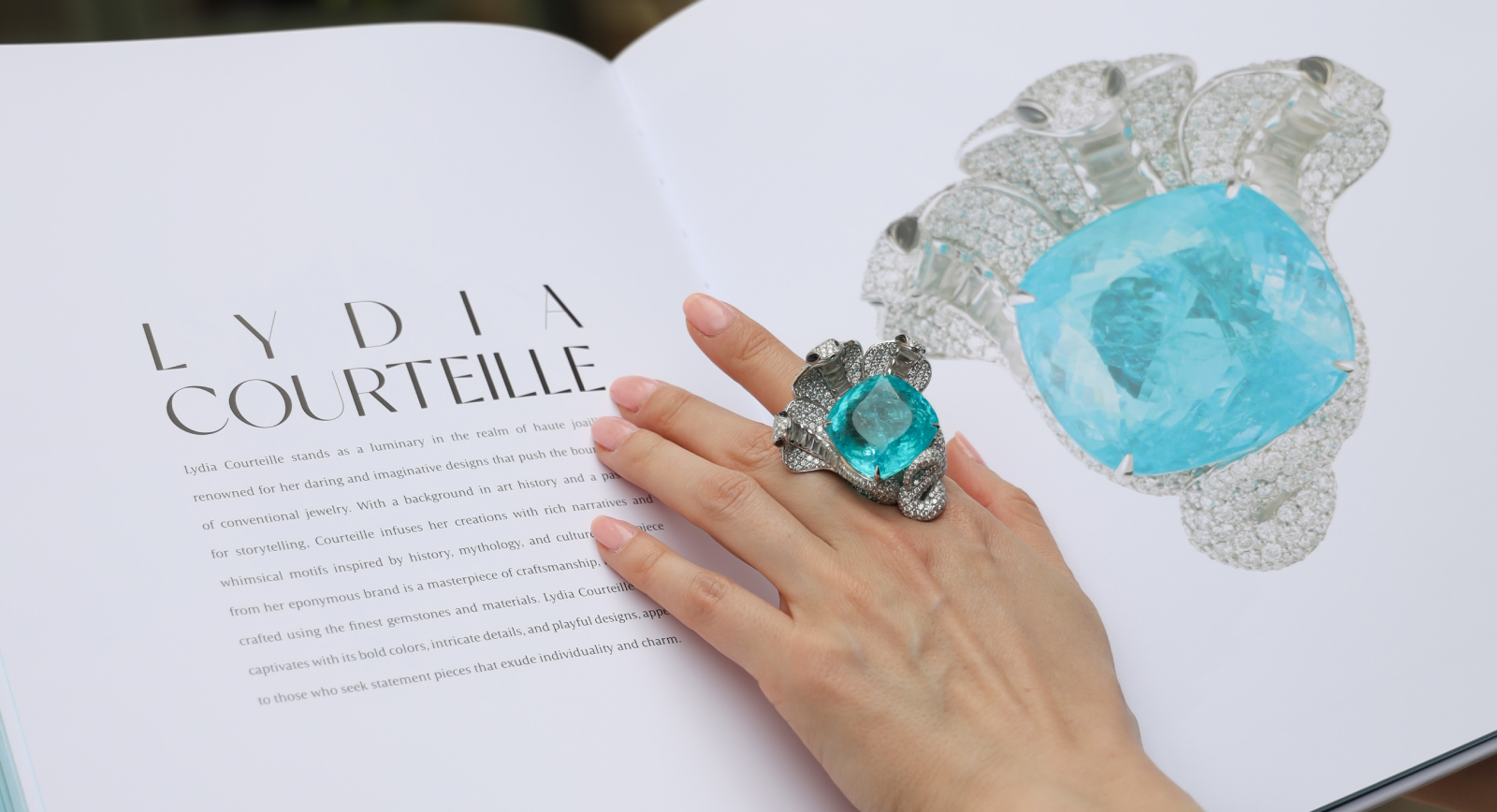
Writing Adventures:Co-Authoring the Book
Paraiba: The Legacy of a Color
Brand Focus: Louis Vuitton
Jewellery Insights straight to your inbox
